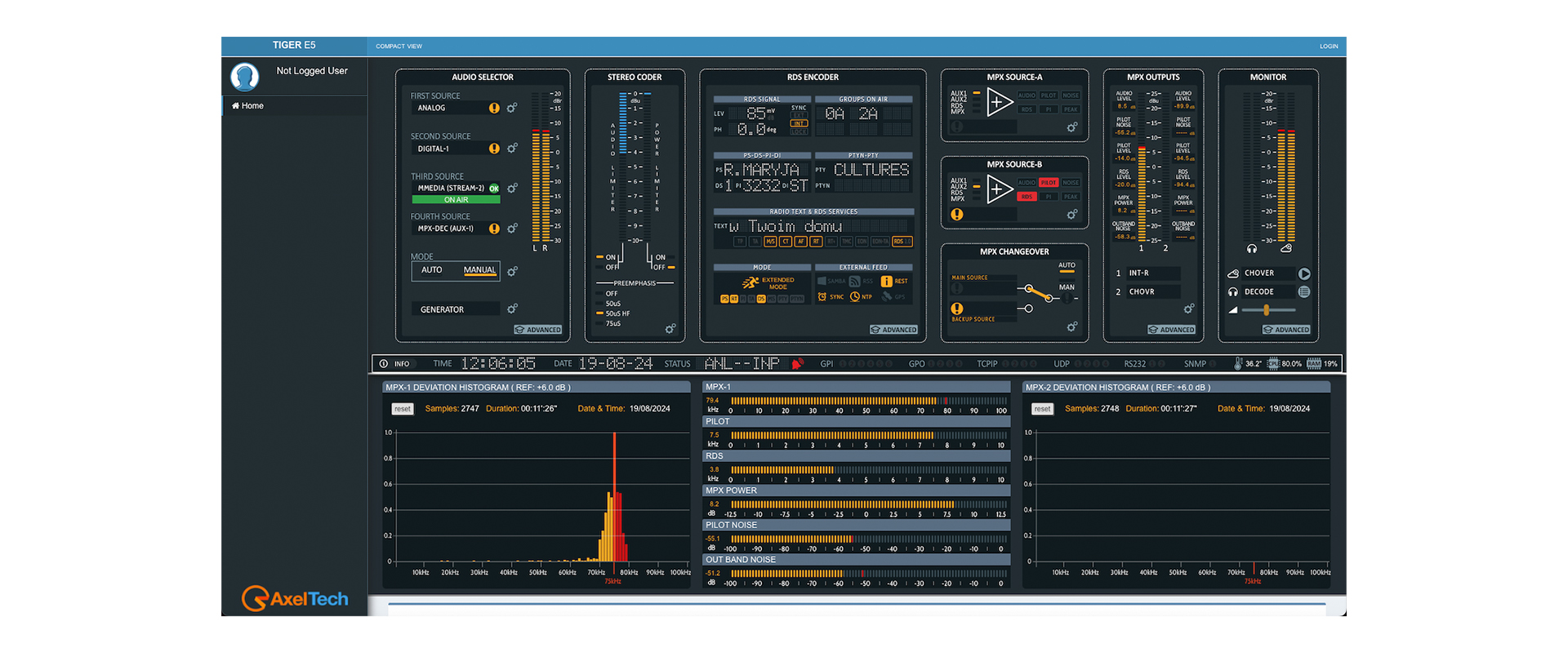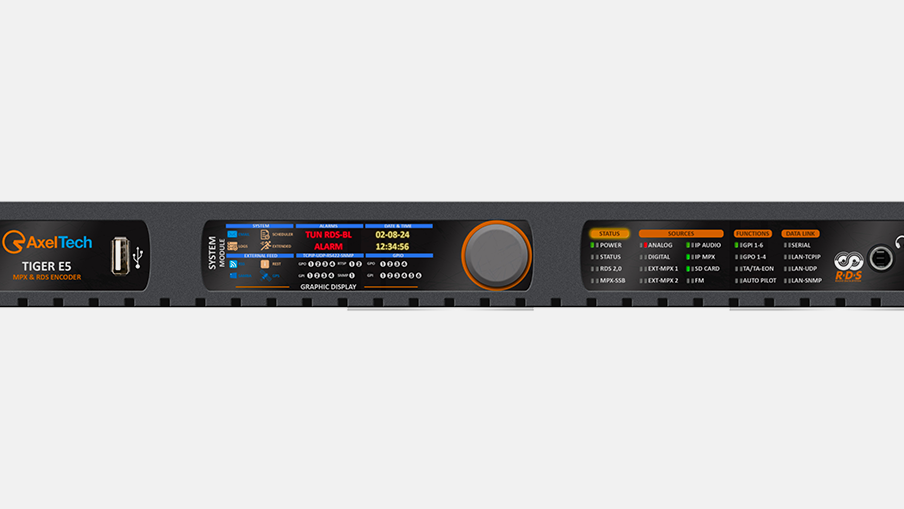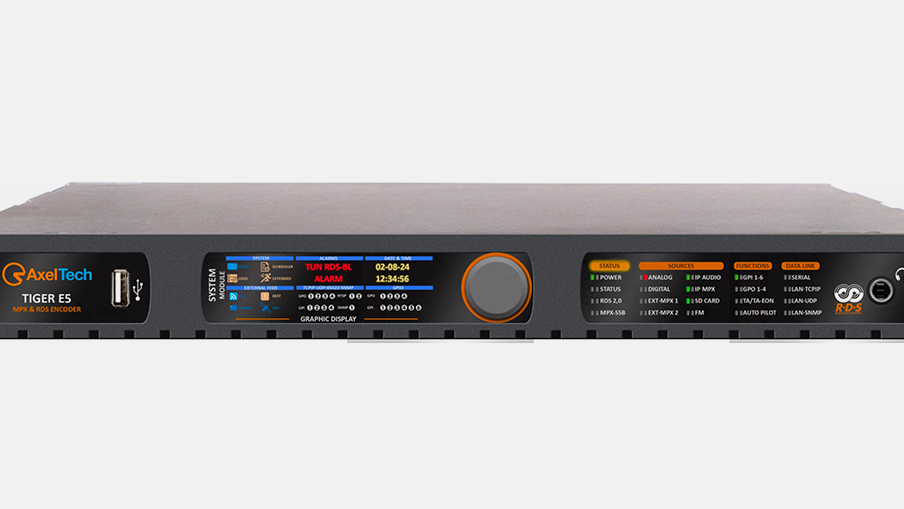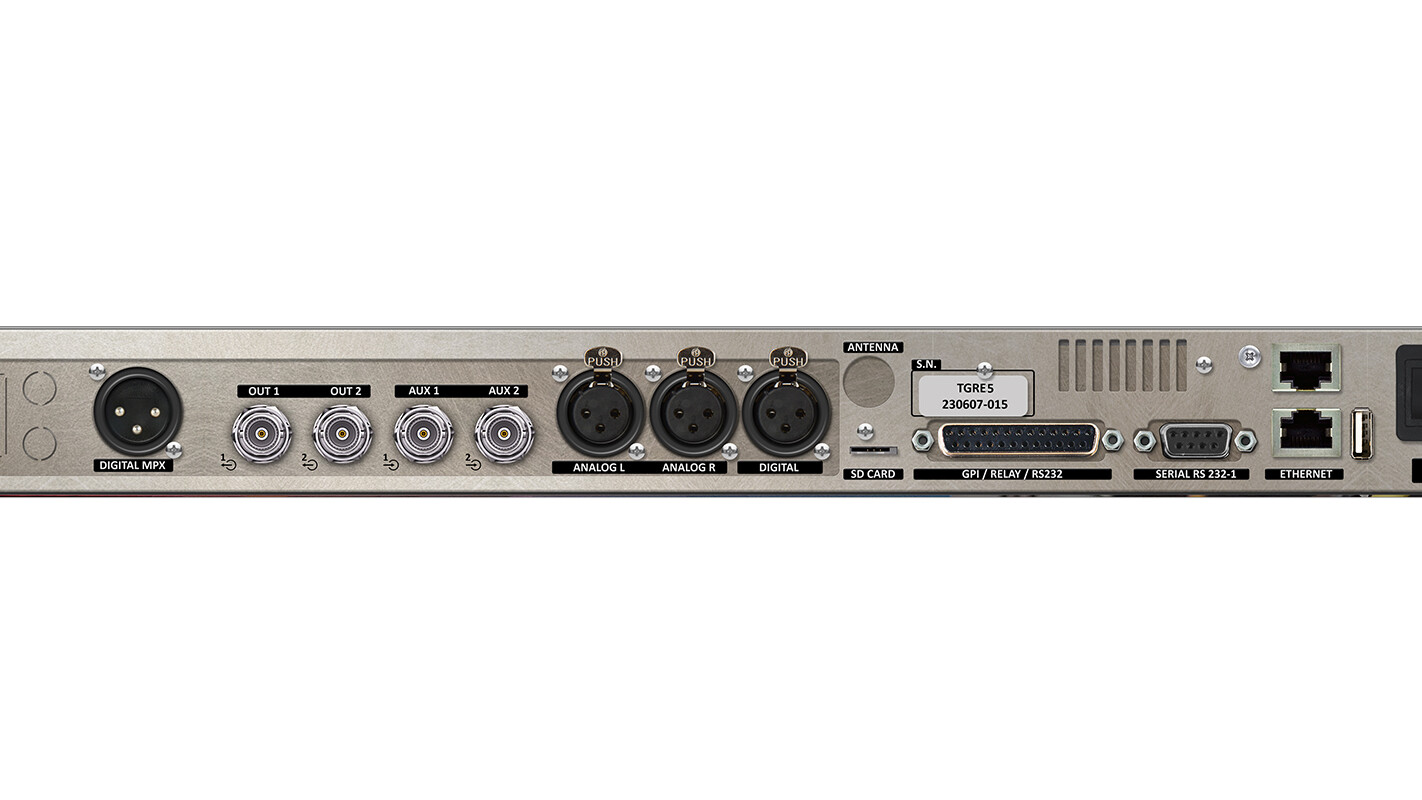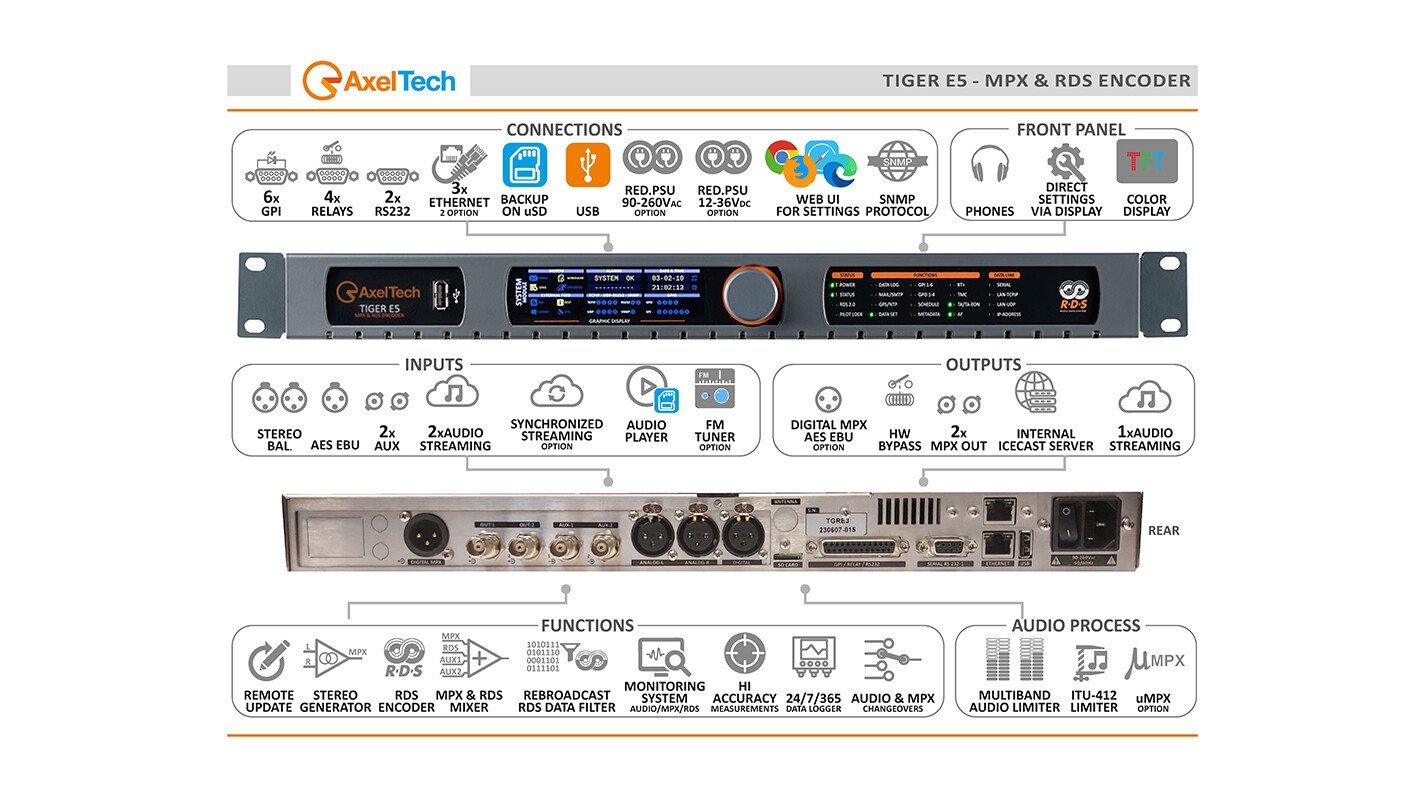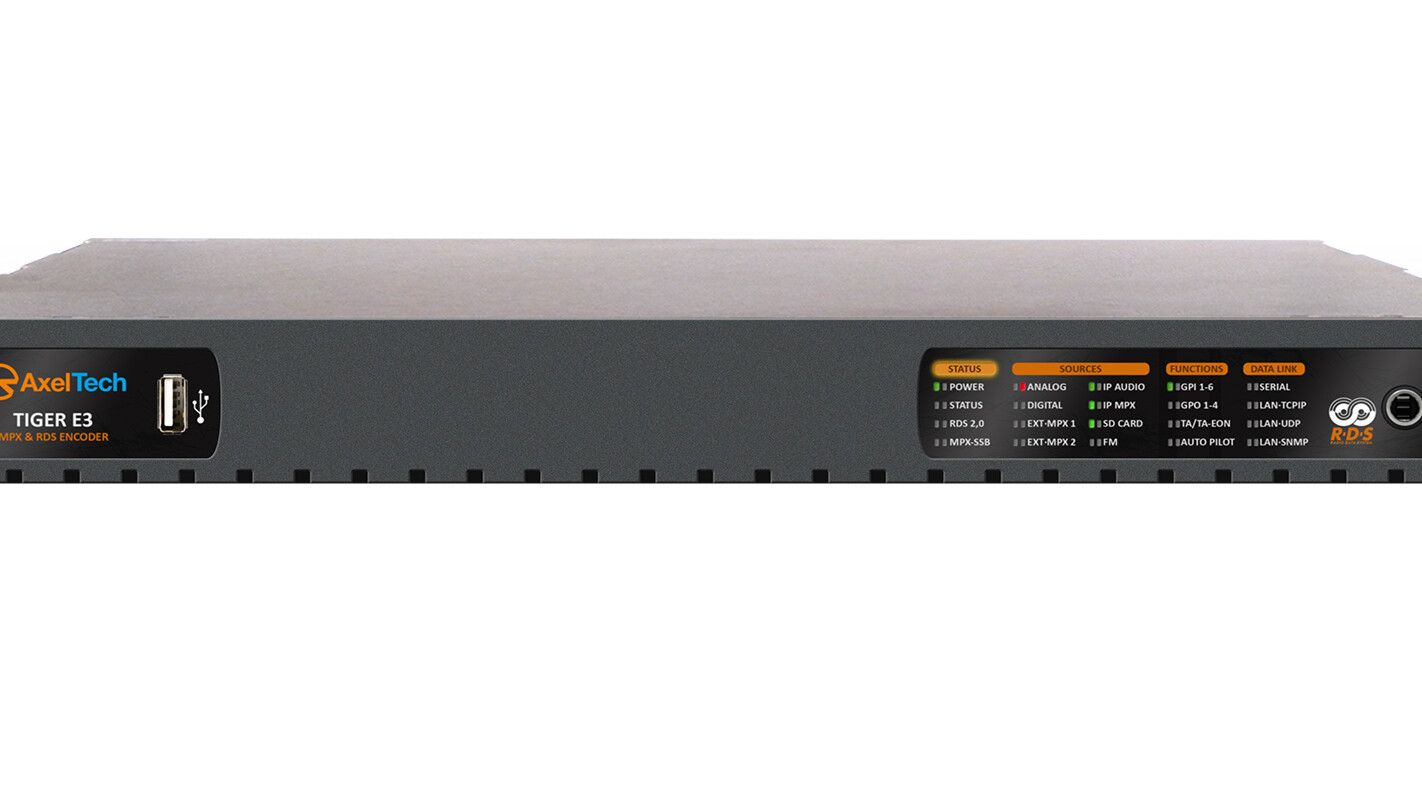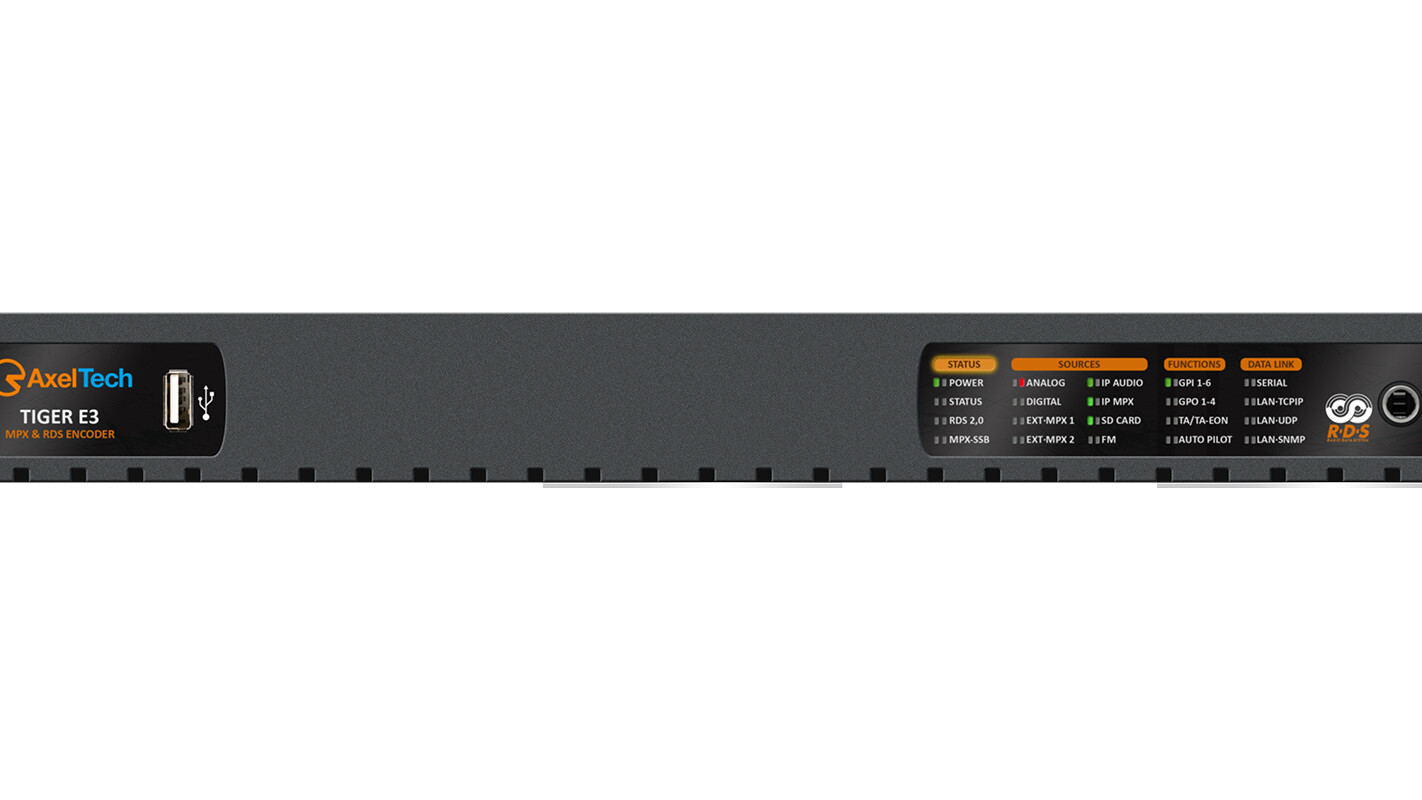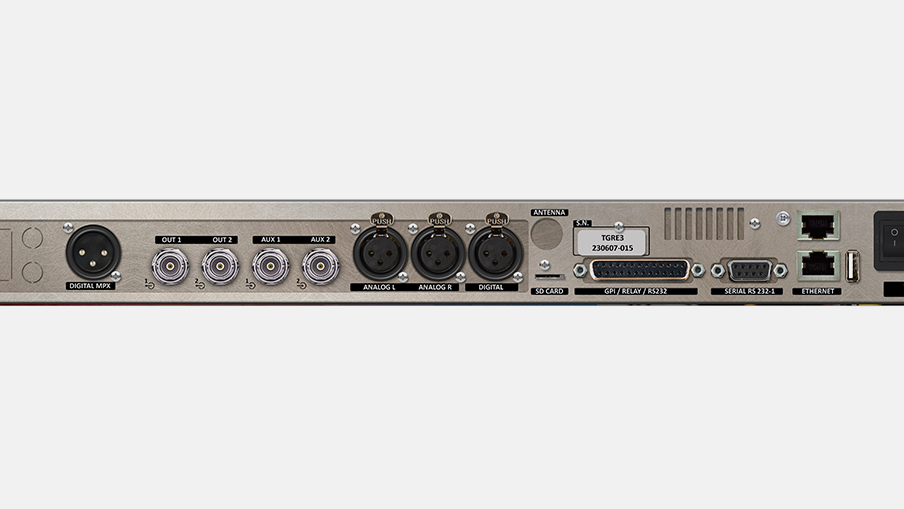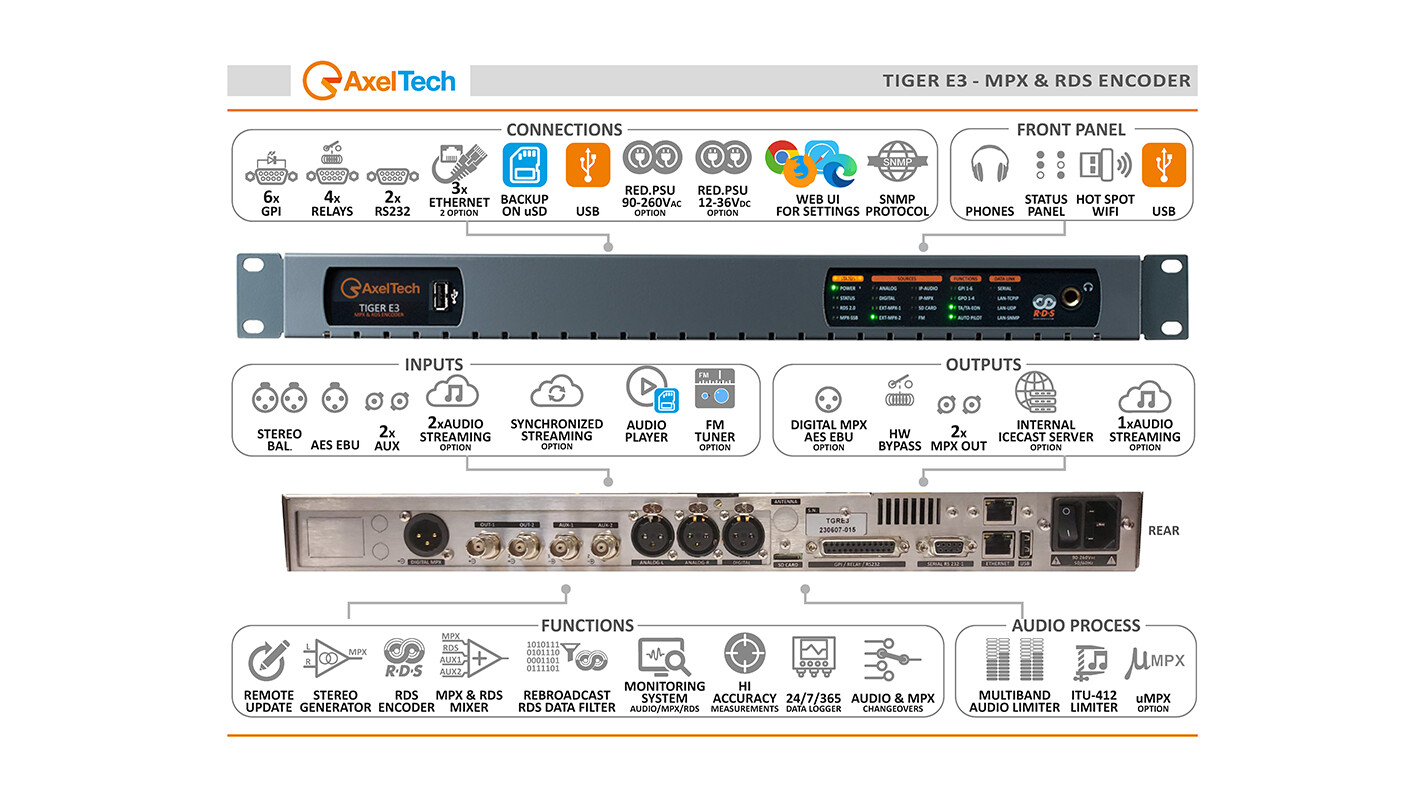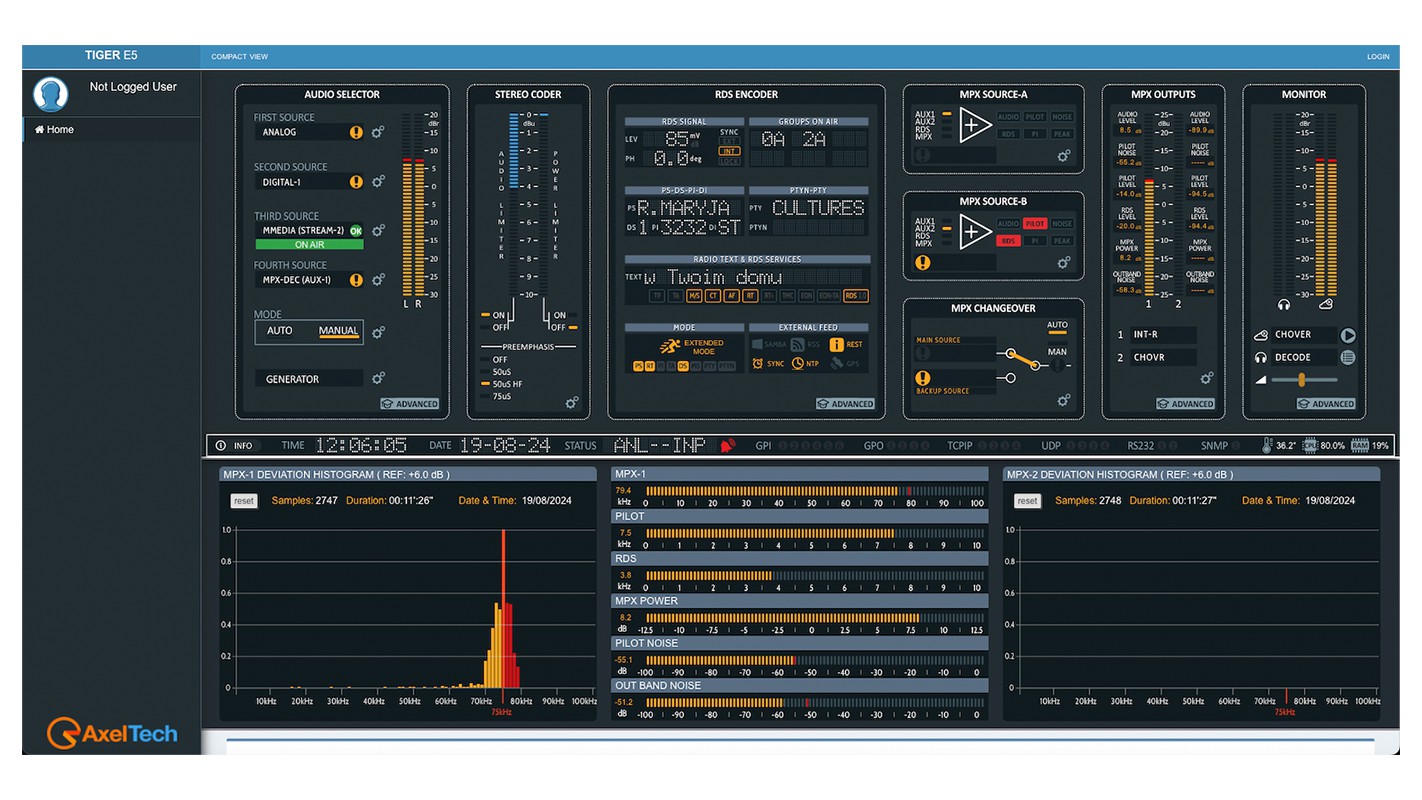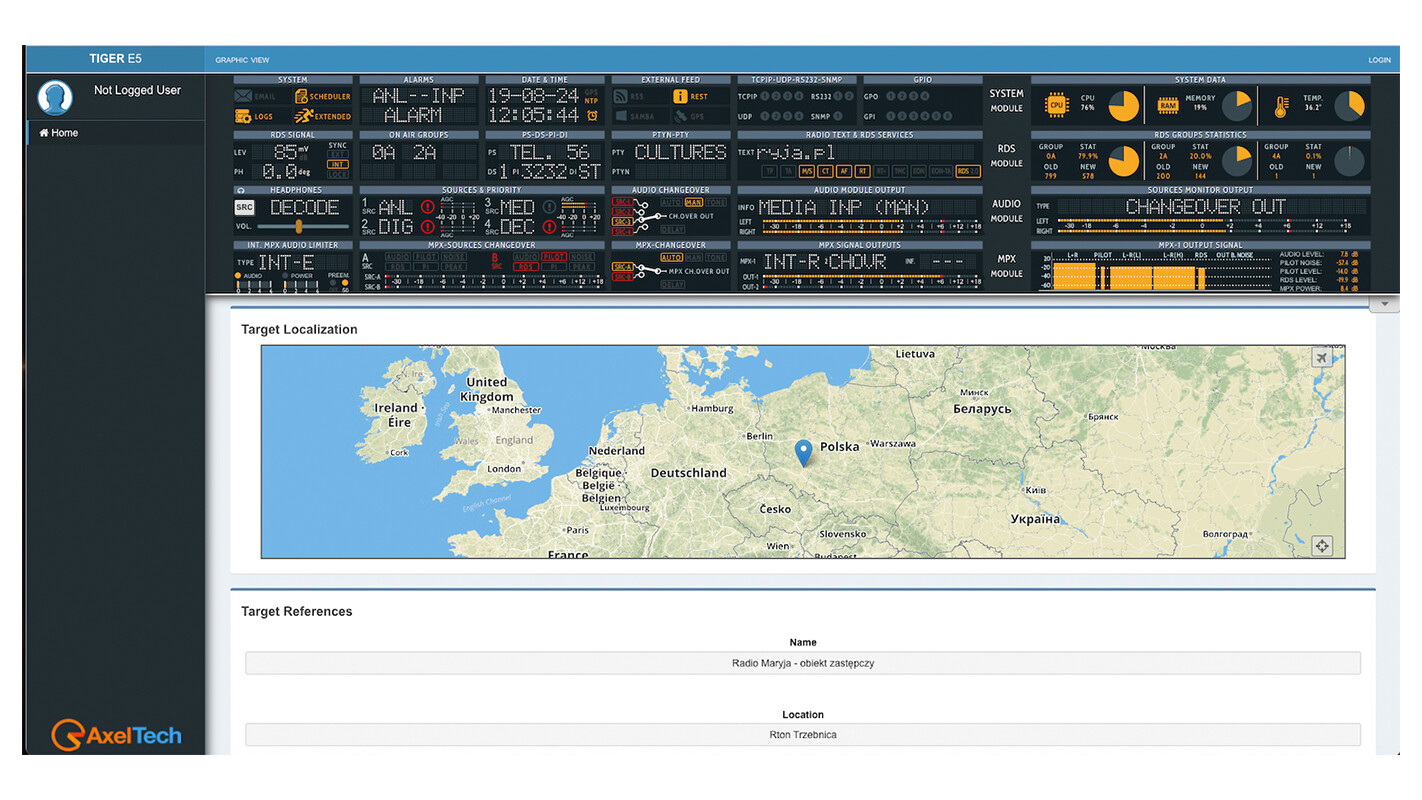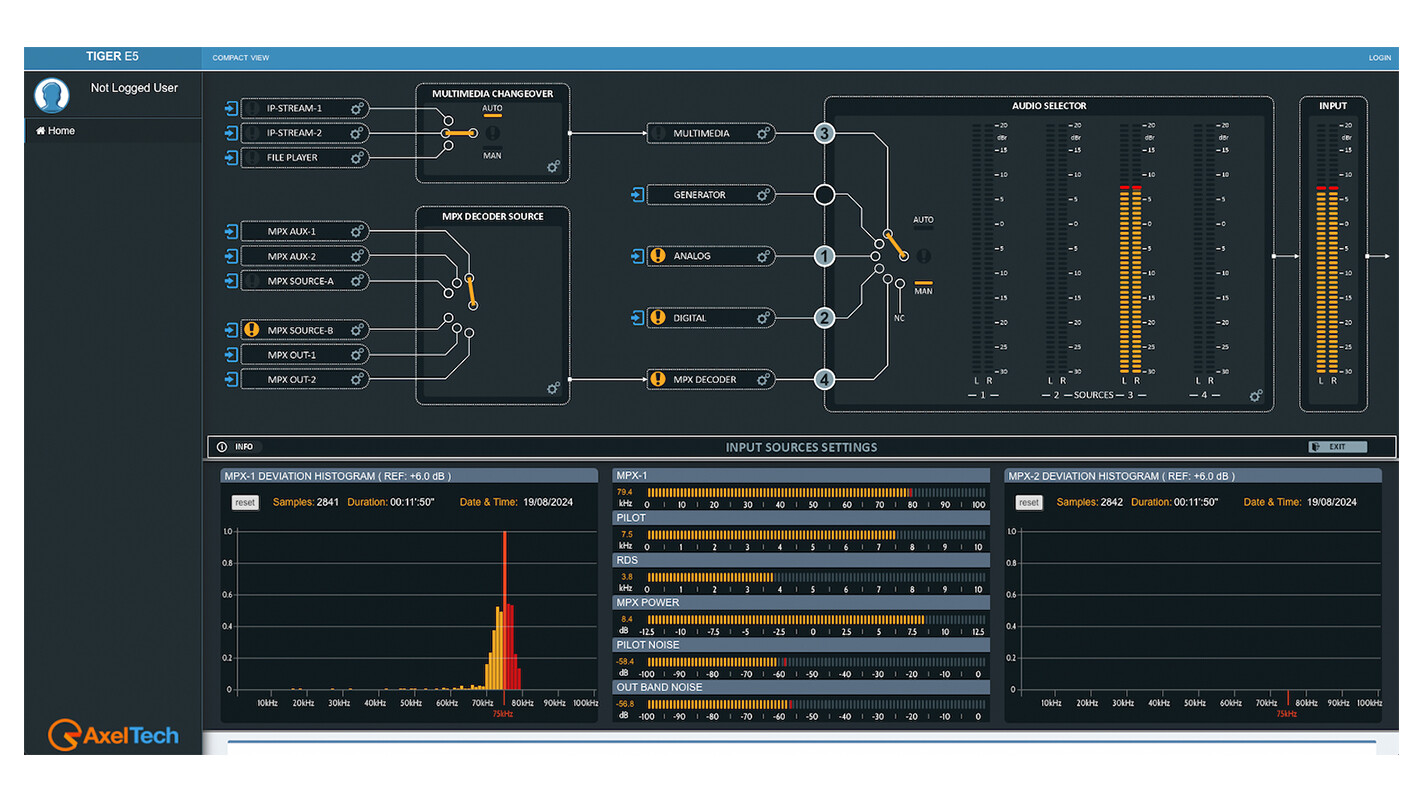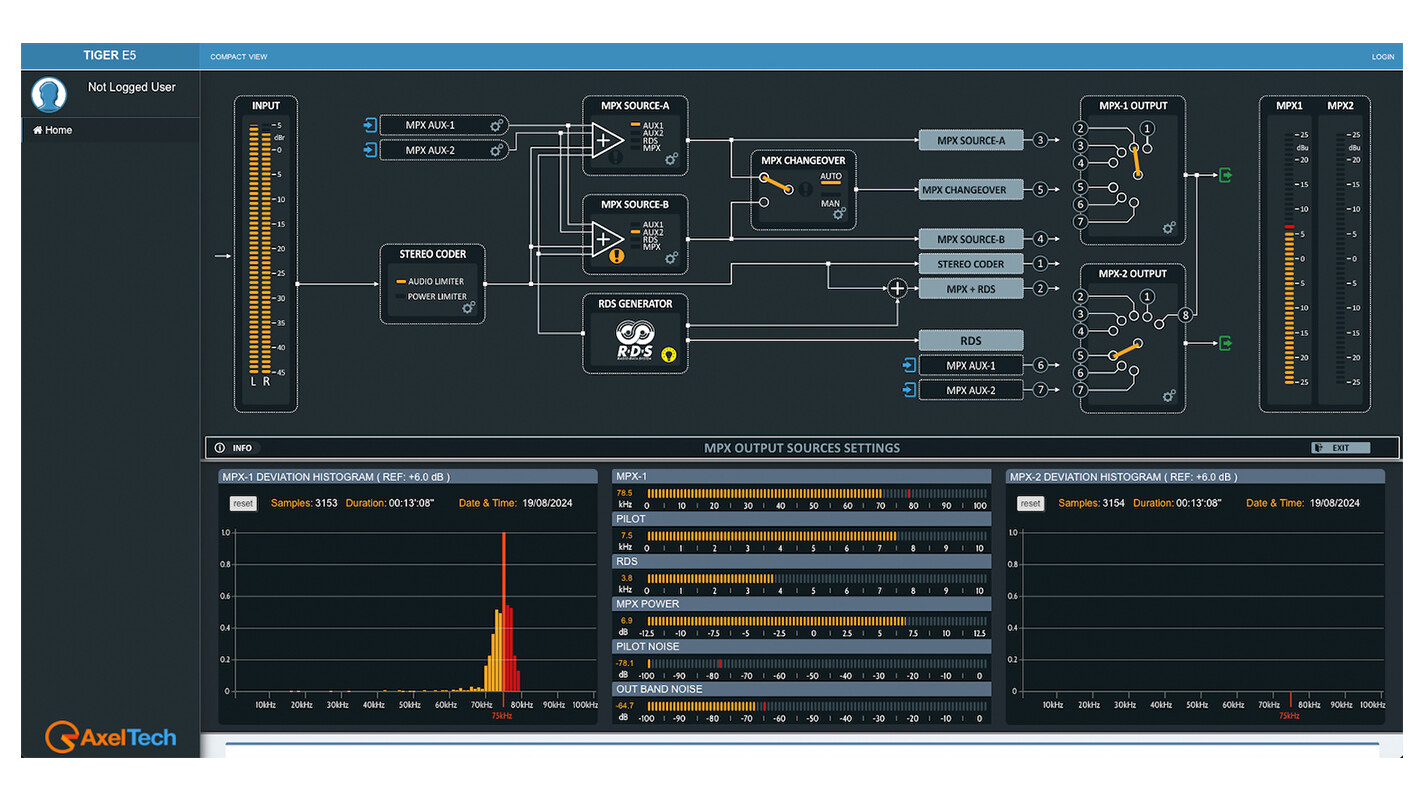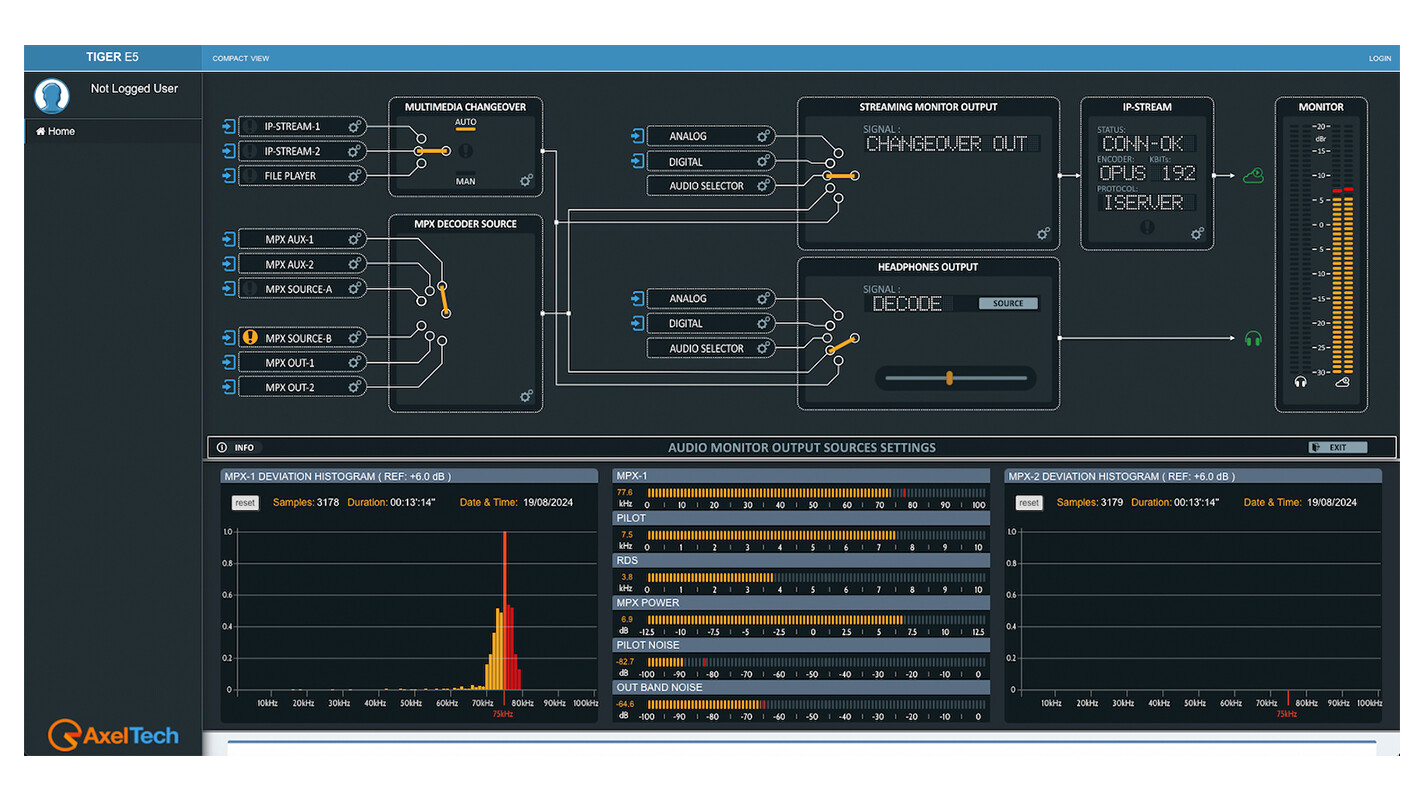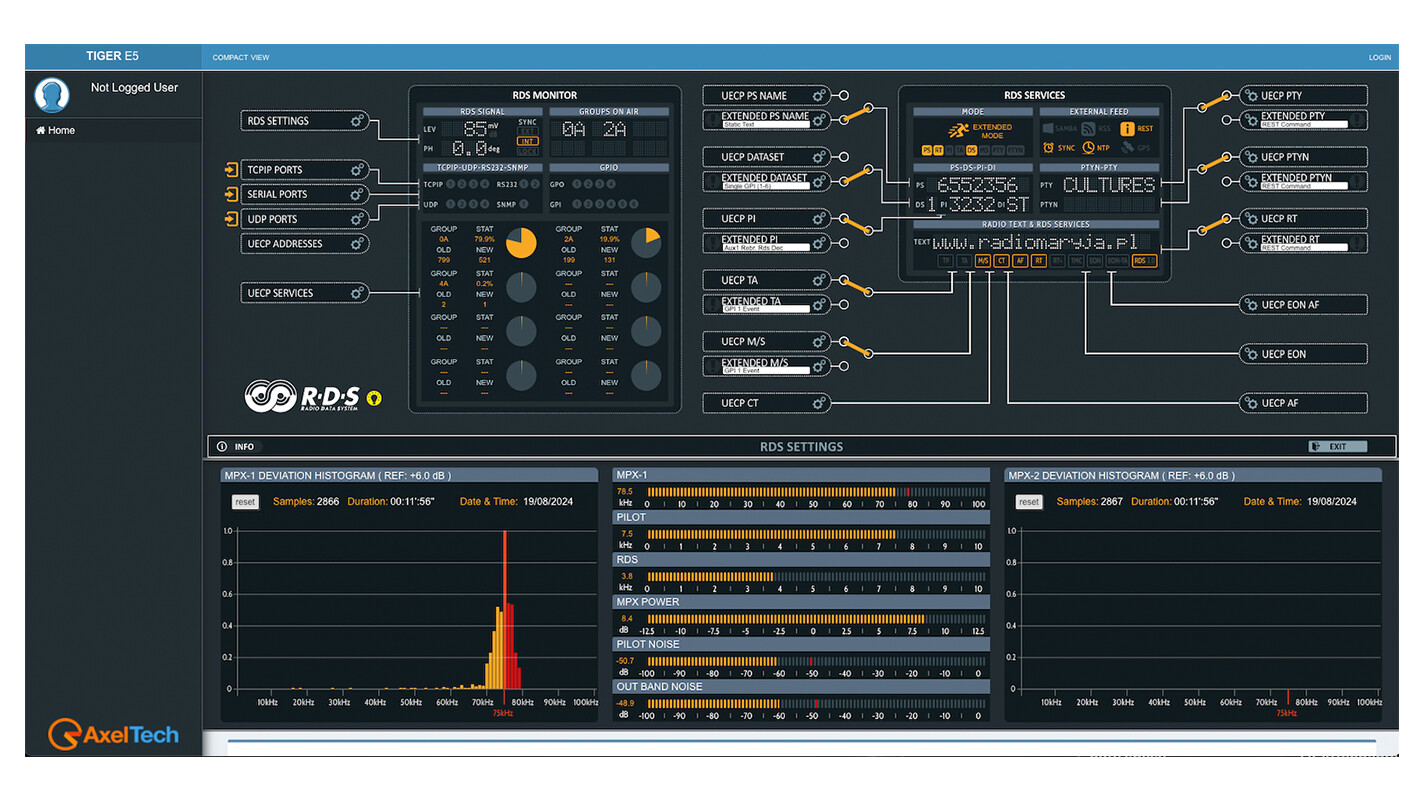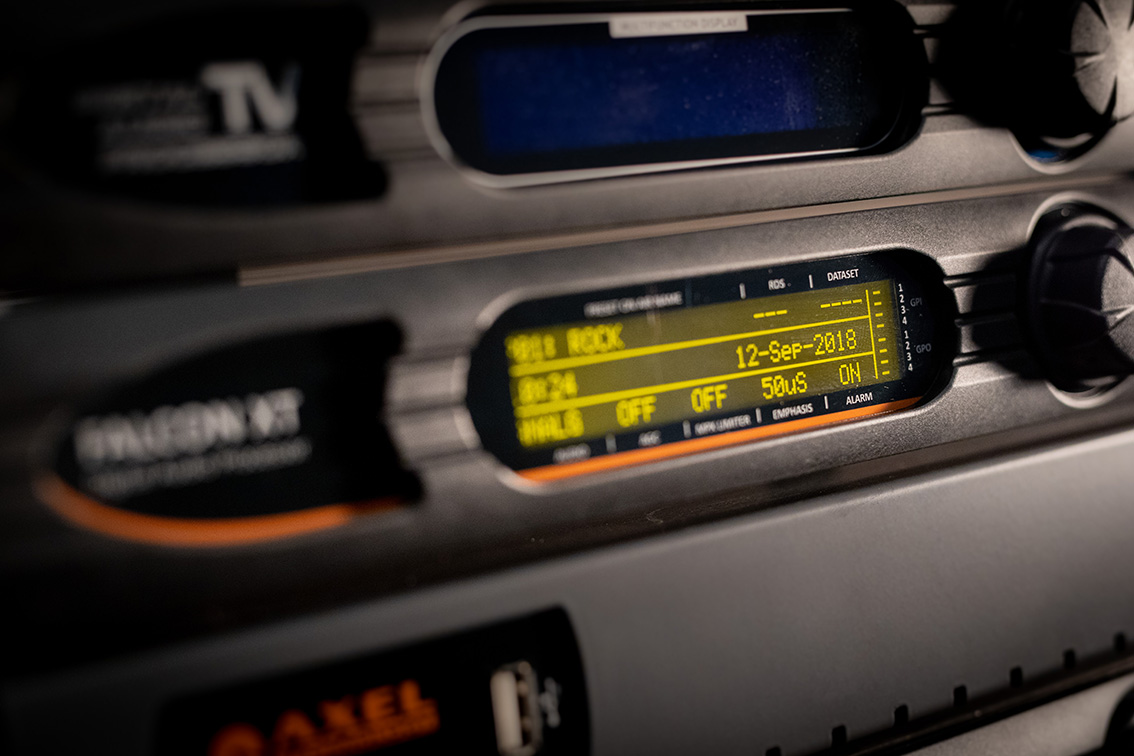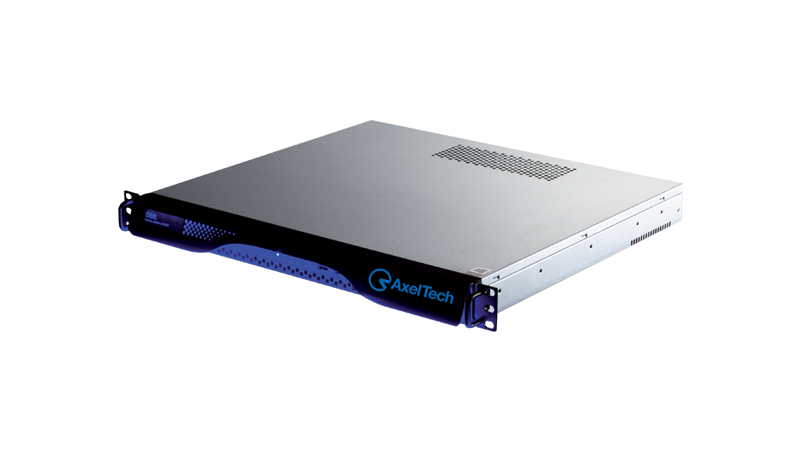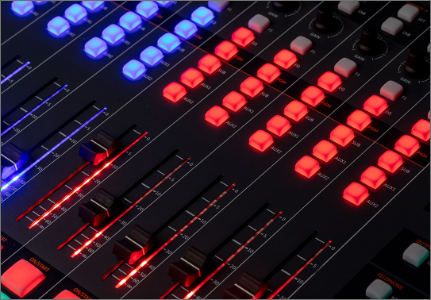TIGER E3/E5
TIGER E3/E5
MPX Stereo Generator & RDS Encoder
The Tiger E3/E5 is a highly versatile device that serves multiple functions within the broadcasting and audio monitoring domain. Primarily, it is equipped to function as a high-performance MPX stereo generator capable of ensuring optimal stereo signal quality for radio broadcasting. In addition to this, it also serves as a reliable FM site control system, providing seamless management and control over FM broadcasting sites.
Furthermore, the Tiger E3/E5 incorporates cutting-edge technology to operate as a monitoring IP-audio codec, allowing for efficient and high-quality audio monitoring over IP networks. This feature is essential for maintaining consistent and high-fidelity audio transmission in various broadcasting scenarios.
In addition to its core functions, the Tiger E3/E5 integrates other advanced features that enhance its capabilities further. These include an audio changeover, an audio limiter, a stereo generator, an RDS encoder for embedding digital information into FM radio signals, an MPX changeover for smooth signal transition, and an integrated FM monitoring system with a built-in tuner for comprehensive monitoring and control.
Overall, the Tiger E3/E5 stands as a comprehensive and versatile solution, offering a wide array of functionalities to support efficient and high-quality broadcasting and audio monitoring operations.
Now Tiger E5 also embeds the brand new TigerSync Streamer feature, a cutting-edge technology that offers a way to distribute audio to FM transmitters through a simple Internet connection using IceCast, a reliable and flexible protocol.
Tiger E3/E5 can now be equipped with Thimeo MicroMPX codec for studio-to-transmitter link (STL) as an option.
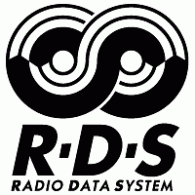
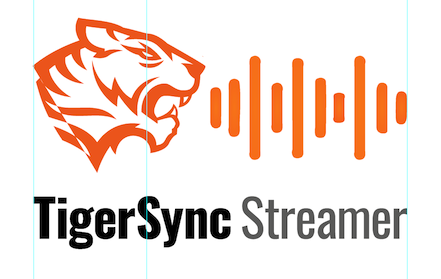

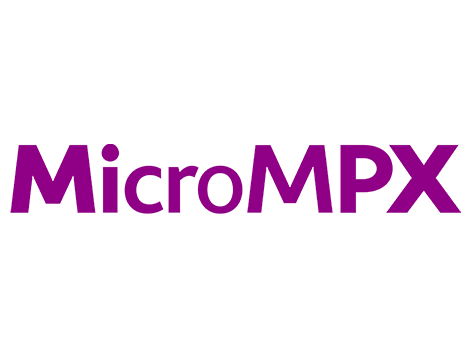

Connect Any Kind of Sources
Tiger E3/E5 manages any audio sources such as Analog & Digital audio, IP audio, Backup-Player, and MPX, thanks to the 4-channel audio changeover and 2-channel MPX Changeover. A delay can be assigned to any source and allows the time alignment of two or more sources. It is possible to use the internal audio player as a backup if all the external sources fail. The internal limiter continuously monitors the source audio levels, allowing the level to manage and avoid any overshoot generated by the satellite or IP-Audio MPEG decompression. MPX inputs are decoded (L&R) and available to be used as sources for the Audio Changeover or MPX Changeover. Digital MPX AES192 is available optionally (1 Out). MPX Changeover features a UECP filter that allows the regeneration or filtering of any RDS service (PS, RT, RT+IH, TMC, TA/TP), thus giving the user the chance to maintain, replace, or filter any RDS parameter starting from the incoming RDS signal. With the optional Tuner, it becomes a Changeover / FM Monitoring System with an integrated Tuner. Tiger E5 can manage and decode MPX and RDS signals, receive IP Audio streaming signals, and receive and analyze Analog and Digital audio signals. Thanks to the 4 channels Audio changeover and MPX Changeover it can handle every kind of received signal in a transmitting site.
Easy Access
Tiger E3/E5 is fully configurable via the WEB interface. Its web server is compatible with all the available web browsers (Chrome, Firefox, Edge, Opera, Safari, etc…). Tiger E3/E5 supports laptops, tablets, and smartphones simplifying the browsing and setting of the device with its responsive-kind graphic interface that adapts the viewing mode according to the resolution and position (portrait/landscape) of the current viewing device. The provided WiFi USB dongle creates a specific WiFi hotspot that enables access to the device without the need for cable or wireless net. Tiger E3/E5 features 3 IPV4 and 3 IPV6 addresses to ensure concurrent connection for all the broadcasting and monitoring systems.
Easy Maintenance
Any first-time user can take advantage of Tiger E3/E5 simplified settings management. Easy Configuration Function quickly and easily enables the user to set the working mode, while Quick RDS Setup brings the most simple way to set the main RDS parameters. Import/Export and Preset Manager are available for more advanced management of Tiger E3/E5. These functions apply to the whole device configuration or only to some selectable modules (System, RDS, MPX, Audio, Multimedia, and Tuner). Tiger E3/E5 uses a uSD card to create an automatic copy of all the device data whenever the user changes anything. If the device needs to be replaced or duplicated, the uSD card can be used to clone it.
Monitoring
Tiger E3/E5 features an endearing GUI (Graphical User Interface) that makes use of clear elements, rich in information. With a simple selection of the available banners, it is possible to keep under control any function. The selected banners are always visible in any menu. Tiger E3/E5 displays in both graphical and numerical format all the input and output levels as well as the internally generated signals. The visualization can be numerical, bar graph, or time-related.
In the RDS section, a specific area is available for on-air RDS group analysis (static and dynamic) to evaluate service balancing. In the MPX section, spectrum analyzers display the MPX+RDS input and output signals. TIGER E3/E5 provides two independent listening paths for every internal audio source. Local: use the headphone socket on the front panel and the display to select the source. Remote: using the internal IP audio encoder that enables the remote audio receiving with different listening quality choices. The MPX decoder lets the user listen to the decoded L&R audio for any of the MPX sources, input, output, or internal.
NEW: TigerSync Streamer
The TigerSync Streamer solution by AxelTech offers a way to distribute audio to FM transmitters via web technologies using IceCast, a reliable and flexible protocol.
IceCast can handle thousands of connections and allows up to 15,000 users to listen without interruptions when the audio is uploaded to a cloud server. This protocol is unsuitable for traditional broadcasting as it is not synchronous and can result in a 1 to 5-second difference for users listening to the same radio broadcast. For instance, when the FM Tuner is equipped with automatic frequency control (RDS-AF) while driving, the seamless transition between the transmitters is imperative for ensuring an uninterrupted listening experience for the user.
AxelTech’s R&D efforts have been focused on ensuring that this technology is compatible with broadcasting needs. With the TigerSync Streamer option, a Tiger E5 Encoder serves as the network’s hub, handling the encoding process and transmitting the signal to an IceCast server. This can be the Tiger‘s internal IceCast server, with a limited number of reception points (up to 15) due to the Tiger‘s resource constraints, or an IceCast server set up on a Linux cloud server.
With TigerSync Streamer we have implemented a sophisticated method for synchronizing audio using inaudible timestamp codes. These codes are transmitted through the Opus codec at rates ranging between 32Kbits/sec to 510 Kbits/sec (or MP3 192kbits-320kbits/sec) and then distributed via an IceCast Server. On the receiving end, the Tiger devices capture the IceCast stream and timestamp data, ensuring precise synchronization for audio playback. As a result of this synchronization approach, there is a consistent delay lasting anywhere from 1.0 to 10 seconds, with the optimal latency falling within the range of 2 to 3 seconds. This fixed audio latency remains uniform across all decoding Tiger units in comparison to the encoding units, resulting in a reception delay. However, TigerSync Streamer guarantees that all decoders maintain synchronization with an impressive accuracy of a few milliseconds.
In the initial stages of the project, the target synchronization between decoded audio over the network was set at 30 ms. However, the achieved result surpassed expectations, with the delay being below 5 ms. While the system was not designed as an isofrequency, it effectively ensures the alignment of all transmitters and facilitates imperceptible transmitter changes.
TigerSync Streamer, designed to provide a backup feed to transmitters, has exceeded expectations by proving itself in the field as a technology capable of powering the distribution network through a solid, precise, and low-cost infrastructure.
NEW: Micro MPX
Tiger E3/E5 can now be equipped with Thimeo MicroMPX codec for studio-to-transmitter link (STL) as an option.
MicroMPX transports full FM composite MPX signal, including pilot and RDS, at 320kbit/s with perfect peak control over private and public networks.
The new option includes a dedicated internal hardware module with a separate LAN connector and internal audio input/output in digital format for perfect audio quality.
The MicroMPX lovers can now take advantage of all the additional options allowed by AxelTech Tiger E3/E5, like four channel changeover, backup SD card audio player, RDS post-processing, MPX, and RDS decoding for monitoring, and many more, which can satisfy any need at the transmitting site.
General
- Main Supply 90–260Vac 50/60Hz. 15W;
- Green device – only 15W;
- Full Color Graphic display 480×128 (only Tiger E5);
- Status LED panel with 40 LEDs;
- Rack 1u 19” – Inox steel;
- Redundant PSU (available as an option);
- Redundant PSU 12-48 VDC (available as an option);
- High immunity to strong RF fields, designed to be installed in high-power TX sites;
- Fully Digital – No trimmer.
Inputs & Stereo Generator Section
- Analog input on XLR;
- Digital AESEBU input on XLR;
- Double streaming IP input (MP3, OPUS, PCM, VORBIS…);
- Double MPX output with independent source and level;
- Optional Digital MPX AES192 (1 Out);
- Bypass HW on MPX Outputs (Aux-1 to Out 1&2);
- 2 AUX input (MPX/RDS/SCA) wide band – digitally controlled;
- MPX Changeover between external or internal MPX sources;
- 2 Wide Band mixer to mix internal (Stereo generator and RDS) or external (MPX, RDS, or SCA) signals;
- Configurable delay on MPX signals;
- AGC on each single source;
- Limiter, Clipper MPX;
- ITU BS412 control;
- ITU Loudness measurement;
- Outband noise and Pilot Noise Measurement;
- RDS, Pilot, Main Audio, and Sub Audio Measurement;
- Integrated Hi-Quality MPX Decoder.
Process
- 4 channels Audio Changeover Changeover Audio with source priority / restore logic;
- Backup audio player on SD card;
- Configurable delay on Audio sources;
- Configurable UECP Filter on incoming RDS Signal (AUX-1) for rebroadcasting use;
- Capability to digitally erase RDS signal on incoming MPX+RDS Signal;
- Upgrade FW directly on the field managed by the web GUI interface;
- Audio limiter integrated (Band controlled, Psychoacoustic, Look-ahead, ITU BS412);
- Fast DSP Starting time <5 sec (OS < 30 sec).
Encoder RDS Section
- RDS encoder fully compliant with UECP EBU SPB490 v7.05, CENELEC (Europe) and NRSC (America);
- Fully support all the RDS services, Static, and Dynamic services;
- UEPC Ports (2 Serials, 4 TCPIP, 4 UDP);
- n.8 Data Set;
- n.10 EON + Main PS for each Data Set;
- Integrated RDS decoder;
- Tuner FM with RDS decoder (as an option);
- Dataset switch managed by UECP/SNMP/REST/HTTP/ASCII PARSER/TXT FILE/GPI;
- Easy to interface with any Radio Automation (UECP/SNMP/REST/HTTP/ASCII PARSER/TXT FILE);
- Capability to connect with any Radio Automation to get data for RDS (PS/RT/RT+/TA/MS);
- Easy RDS page fast setup.
GUI & Monitoring
- Fully programmable by Web GUI interface, all the browsers are supported;
- Simple and intuitive GUI, supported by all devices (PC, notebook, tablet, smartphone, etc. ..);
- Easy and configurable graphical interface;
- Multi-user web GUI;
- Map with device geolocation (RX sat or fixed coordinates are required);
- Web GUI with info bubbles;
- Monitoring FM Tuner (as an option);
- MPX spectrum signal Analyzer on outputs, Aux inputs, and internal signals;
- Dynamical graphics to see the value in the time;
- RDS Groups data analyzer;
- GUI with LED meter bars;
- IP audio streaming encoding for remote audio monitoring, with independent source selection and level;
- Headphones output with independent source selections and level.
Monitoring Tuner (optional)
- RF Level measurement;
- Carrier Offset;
- MPX, RDS, and Pilot deviations;
- BLER (Block Error Ratio);
- RDS Decoder (PI, PS, RT, PTY, RT+, TP, TA, M/S, CT, AF, TMC, EON).
Communications & Management
- Ethernet/USB/RS232/GPIO connections;
- 2nd Ethernet (as an option);
- Easy WiFi Access – Hot spot WiFi USB to connect directly a wireless device to the Tiger;
- SNMP V2c;
- Set up to 3 NTP Servers (V1, V2, V3, V4);
- Possibility to send email to 4 receivers and set 3 different SMPT Server;
- IPV4 and IPV6 support (3 addresses IPV4 and 3 addresses IPV6);
- N°2 RS232 for UECP commands;
- 6 GPI and 4 Relay Out (all GPIO are fully programmable by the GUI);
- HTTP, FTP, SNMP, SMTP, UDP, TCP support;
- Alarms via: TRAP (SNMP), email(SMTP), GPO, HTTP;
- External GPS support (Time, Date, and Geolocation);
- uSD Card for clone function for maintenance, and easy replacement of a faulty unit;
- Import and export configuration functions;
- PRESET, with load/save/import /export functions;
- Logs 24/7 with export function;
- 6 levels of right access management;
- Easy configuration page setup with info connection diagrams;
- REST API to manage the device;
- ASCII PARSER interface for easy command line settings;
- SAMBA SHARE function to connect and get data from an external PC;
- Multi-user contemporary access.
NEW: TigerSync Streamer
The TigerSync Streamer solution by AxelTech offers a way to distribute audio to FM transmitters via web technologies using IceCast, a reliable and flexible protocol.
IceCast can handle thousands of connections and allows up to 15,000 users to listen without interruptions when the audio is uploaded to a cloud server. This protocol is unsuitable for traditional broadcasting as it is not synchronous and can result in a 1 to 5-second difference for users listening to the same radio broadcast. For instance, when the FM Tuner is equipped with automatic frequency control (RDS-AF) while driving, the seamless transition between the transmitters is imperative for ensuring an uninterrupted listening experience for the user.
AxelTech’s R&D efforts have been focused on ensuring that this technology is compatible with broadcasting needs. With the TigerSync Streamer option, a Tiger E5 Encoder serves as the network’s hub, handling the encoding process and transmitting the signal to an IceCast server. This can be the Tiger‘s internal IceCast server, with a limited number of reception points (up to 15) due to the Tiger‘s resource constraints, or an IceCast server set up on a Linux cloud server.
With TigerSync Streamer we have implemented a sophisticated method for synchronizing audio using inaudible timestamp codes. These codes are transmitted through the Opus codec at rates ranging between 32Kbits/sec to 510 Kbits/sec (or MP3 192kbits-320kbits/sec) and then distributed via an IceCast Server. On the receiving end, the Tiger devices capture the IceCast stream and timestamp data, ensuring precise synchronization for audio playback. As a result of this synchronization approach, there is a consistent delay lasting anywhere from 1.0 to 10 seconds, with the optimal latency falling within the range of 2 to 3 seconds. This fixed audio latency remains uniform across all decoding Tiger units in comparison to the encoding units, resulting in a reception delay. However, TigerSync Streamer guarantees that all decoders maintain synchronization with an impressive accuracy of a few milliseconds.
In the initial stages of the project, the target synchronization between decoded audio over the network was set at 30 ms. However, the achieved result surpassed expectations, with the delay being below 5 ms. While the system was not designed as an isofrequency, it effectively ensures the alignment of all transmitters and facilitates imperceptible transmitter changes.
TigerSync Streamer, designed to provide a backup feed to transmitters, has exceeded expectations by proving itself in the field as a technology capable of powering the distribution network through a solid, precise, and low-cost infrastructure.
New: Tiger-Digital MPX Output
Option (hardware) for Digital AES EBU MPX 192KHz output.
Output available on XLR.
New: Micro MPX Encoder/Decoder Option
Option to generate/receive a uMPX stream (hardware and software).
The Tiger E3/E5 handles this stream as an auxiliary input to which it can add/remove/mix other MPX/RDS signals.
The option includes the adding of an Ethernet port to receive/transmit uMPX streaming.
Tiger-Tuner
Option to receive an FM signal (hardware).
The Tuner measures the following parameters (RF, Multipath, Carrier Offset, MPX, Pilot, RDS, BLER) and decodes the following RDS services (PI, PS, PTY, RT, TA, TP, MS, Presence of: CT, AF, RT, RT+, TMC, EON). The alarms configuration can be controled by a dedicated page.
The tuner can also be used as a rebroadcast source or as feedback for station OFF-AIR monitoring.
Second Ethernet Port
Option (hardware) for adding the second ethernet port.
Redundant PSU 90-260 Vac
Redundant Power Supply.
Redundant DC PSU 12-36VDC
Redundant Power Supply.
| Analog Left & Right Input | |
|---|---|
| Connector | Balanced on 2 XLR – EMI Suppressed |
| Input Impedance | 10Kohm |
| Nominal Input Level (Sensitivity) | Software Adjustable from -12dBu to + 13,0 dBu (0,1dB step) |
| Nominal Input Level | -21,0dBu ÷ +24,0dBu |
| Max Input Level (clipping point) | Selectable +15,0dBu or +24,0dBu |
| A/D conversion | CS4272, 24 bit / 48 Khz |
| Input CMRR | >60dB (20Hz-20kHz) |
| Digital Input | |||||
|---|---|---|---|---|---|
| Connector | Balanced on 1 XLR – EMI Suppressed | ||||
| Input Impedance | 110Ω | ||||
| Standard | AES3 | ||||
| Audio Sample Rate | 32/44.1/48/96/192KHz | ||||
| Adjustable Nominal Input Level (Sensitivity) | From -25,0dBFS to -0,2dBFS (0,1dB step) | ||||
| Nominal Input Level | -36dBFS ÷ 0,0dBFS | ||||
| Dynamic Range (Converter Values) | 124dB (32KHz) – 126dB (44,1KHz) 126dB(48KHz) – 122dB (96KHz) | ||||
| Resolution | 24 bit |
| MPX Input – MPX - AUX1/AUX2 | |
|---|---|
| Connector | Unbalanced on 2 BNC – EMI Suppressed |
| Input Impedance | 50K |
| Adjustable Nominal Input Level (Sensitivity) | Software Adjustable -9dBm to +15,0dBm |
| Range of Level | -21,0dBu ÷ +24,0dBu |
| Max Input Level (clipping point) | Selectable +5,0dBu or +18,0dBu |
| A/D Conversion | Texas PCM4202 |
| MPX Output - MPX - MPX1/MPX2 | |
|---|---|
| Connector | Unbalanced on 2 BNC – EMI Suppressed |
| Output Impedance | 10 Ω |
| Load Impedance | 600 Ω or greater |
| Maximum Load Capacitance | 5nF |
| D/A Conversion | Texas PCM 1796 |
| Composite Output Level | -0,0dBm to +15,0 dBm (0,1 dBm step) |
| S/N | ≥ 85dB |
| THD | ≤ 0.01% |
| Separation | ≥ 70dB |
[table “” not found /]
[table “” not found /]
| Backup Player | |
|---|---|
| Support | On Micro SD CARD (max 64GB) |
| Supported formats | MP3, WAV |
| Supported Sample Rates | 32,44.1,48,64,96 KHz |
| MPX & RDS Signal | |
|---|---|
| Pilot Frequency | 19 KHz +/- 1Hz |
| Pilot Injection | Adj from -25,0dB a -15,5dB (0,1 dB step); 6 to 18% of total deviation |
| Pilot Stability | ±10 ppm (-10 to +55°C) |
| Pilot Distortion | 0,05% (typical) |
| Pilot Distortion + Noise | 0,068% (on 100KHz band) |
| Composite out THD | 0,01% (typical on the whole band) |
| Stereo Separation | >70 dB (typical on the whole band) |
| Linear Crosstalk Main to Sub / Sub to Main | >70 dB (minimum) |
| Digital filtering / band | 30 Hz to 15 kHz (-0,1dB), 17 kHz (-70 dB), 19 kHz (-100 dB) |
| 57 kHz (RDS/RBDS) Protection | Better than 51 dB |
| Pre-emphasis | Off, 50uS, 75uS (+/-0,1dB) |
| Freq Response | ±0,3 dB (30Hz-15kHz) |
| Operation | Mono / Stereo |
| MPX/RDS Output | Adj from -10,0 dB to 15,0 dB (0,1 dB step) |
| Signal/Noise Ratio | ≥ 85 dB (on 100 kHz band) |
| Carrier Suppression | > 85 dB |
| Digital Output MPX - Option | |
|---|---|
| Connectors: | Balanced on 1 XLR – EMI Suppression |
| Input impedance: | 110 Ω |
| Format: | AES192 |
| Sample rate: | 192 KHz |
| Output level adjustment: | From 0,0 dBFs to –30,0 dBFs (0,1 dB steps) |
[table “” not found /]
| System | |
|---|---|
| GPIO Inputs/Outputs | 6 GPI / 4 GPO |
| Communication Port | 2xRS232, 3xUSB, 1xLAN |
| Synchronization | Ext(Pilot Mpx)/Int/ Auto |
| Synchronization Monitoring | Yes |
| RDS Level adjustment | Digitally controlled |
| Phase adjustment | Yes, 0 ÷ 359.9° |
| Separate outputs for RDS+MPX and for RDS only | Yes |
| Command to activate the RDS SCA | Yes |
| Side Chain Mode, Loop through mode, Bypass feature | Yes |
| RDS Subcarrier | 100% Digitally Generated Shape |
| CENELEC – EN50067 compliant – | Yes |
| Accurate Clock Time (CT) Sync with Internet Connection | Yes |
| Remote TA actuation for Traffic Announcements | Yes |
| GPS module for automatic synchronization of the built-in Real Time Clock (RTC) | Optional (USB External) |
| RDS decoder for rebroadcasting RDS Data | Yes |
| Firmware can be upgraded on the field | Yes |
| Front-panel Colour TFT Display | No (Tiger E3) Yes (Tiger E5) |
| Data may be entered on-site with Front-panel knob | No (Tiger E3) Yes (Tiger E5) |
| Front Panel Leds | 40 |
| Operating Temperature | 0°C ÷ 50°C |
| RDS Features | |
|---|---|
| Group supported | All |
| Group Sequence | Configurable |
| PS | 8 DSN x MAIN+10 PSN |
| PI | 8 DSN x MAIN+10 PSN |
| PIN & PTY | RDS/RBDS |
| AF Method A | up to 1024 (64 lists) |
| AF Method B | up to 1024 (64 lists) |
| RT | Yes, 32 messages |
| RT rate adjustment | Group Sequence |
| RT+ for songs and content tagging | Yes |
| TP | Yes |
| TA Control | Command, Software, GPI |
| PTYN | Yes |
| EON | 10 PSN |
| CT | Yes |
| TMC, EWS, IH, TDC | Yes |
| Free Format Groups (FFG) | Yes |
| Open Data Application (ODA) | Yes |
| PS Scrolling | Yes |
| Scrolling by characters, by word, auto centre, truncate long words | Yes (Characters – from 1 up to 8) |
| Communication | |
|---|---|
| Connection with Automation Software | Yes |
| Network Connectivity | 4 TCP ports / 4 UDP / 1 SNMP |
| Configuration Software | Web Server, FTP |
| Password Protection | Yes |
| ASCII Protocol | Configuration Messages |
| REST Command | Yes |
| Alert notifications on user-defined events via SNMP traps or E-mails | Yes |
| Embedded SNMP agent permitting active management tasks | Yes |
| Supported Network Protocols | HTTP, SMTP, UDP, TCP, NTP, FTP |
| UECP Protocol | EBU SPB490 Ver.7.05 |
| PI Calculator | Yes |
| RDS 2.0 Ready | Yes |
| PSU | |
|---|---|
| Power Supply | 90-260 Vac / 47-63 Hz 15W |
| Dimensions | |
|---|---|
| Dimensions (W; H; D) | 485 x 44 x 240 mm |
| Weight | < 3Kg |
Falcon XT
Radio has the power
FALCON XT is the top class digital audio processor that also features Stereo Generator and RDS Encoder. It’s the full optional and most prestigious equipment, designed for those broadcasters that really want to get the best performances.
FALCON XT ensures top quality performances and exclusive audio. It features powerful DPSs, 5-band architecture, dual band AGCs, 3-band equalizer, stereo enhancer, speech detector and 4 limiters. The comprehensive and accurate control of each audio parameter allows to shape perfectly the audio to broadcast unique and exceptional branded sound.
The LAN port and the built-in Web Server allow to control the processor and tune audio from anywhere. The built-in digital Stereo Generator ensures an extremely precise MPX Signal. The RDS Encoder (optional) is in compliance with UECP SPB490, provides 2 Data Set with a wide range of static services, including Radio Text.
FALCON XT features full connectivity with analog and digital I/O (over XLR connectors) and 2 independent MPX outputs, USB, GPI and serial ports. The hardware bypass circuit is always included to guarantee audio presence and audio programs continuity.
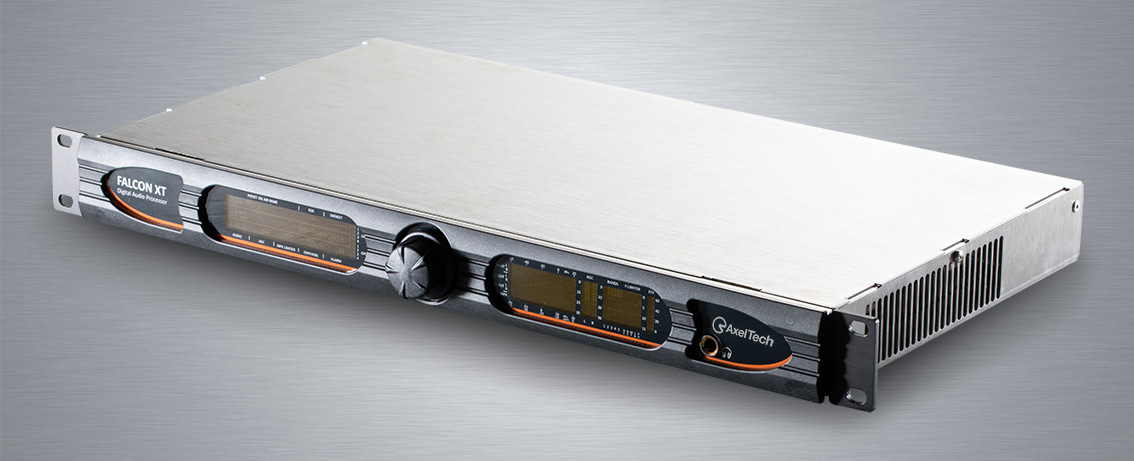




Highlights
General
- Main Supply 90--260Vac 50/60Hz. 15W
- Green device - only 25W
- Dual Graphic display
- 1RU standard 19” - Inox steel
- High immunity to strong RF fields, designed for high power TX sites
- Fully Digital
Inputs Outputs
- Analog input on XLR,
- Analog Input Settings : Sensitivity, Input Mode, Phase Rotator and High Pass Filter
- Analog Output on XLR
- Analog Output Settings: Level, Preemphasis, Source and Impedance.
- Bypass HW on Analog Outputs (Analog Input to Analog Output)
- Digital AESEBU input on XLR
- Digital AESEBU Input Settings: Sensitivity, Input Mode, Phase Rotator and High Pass Filter
- Digital AESEBU Output on XLR
- Digital AESEBU Output Settings: Level, Preemphasis, Source, Rate, Resolution
- Bypass HW on Digital AESEBU Outputs (Digital Input to Digital Output)
- Automatic audio input changeover
- Double MPX output with independent and level setting.
- Bypass HW on MPX Outputs (Aux-1 to Out 1&2)
- 2 AUX input (MPX/RDS/SCA) wide band
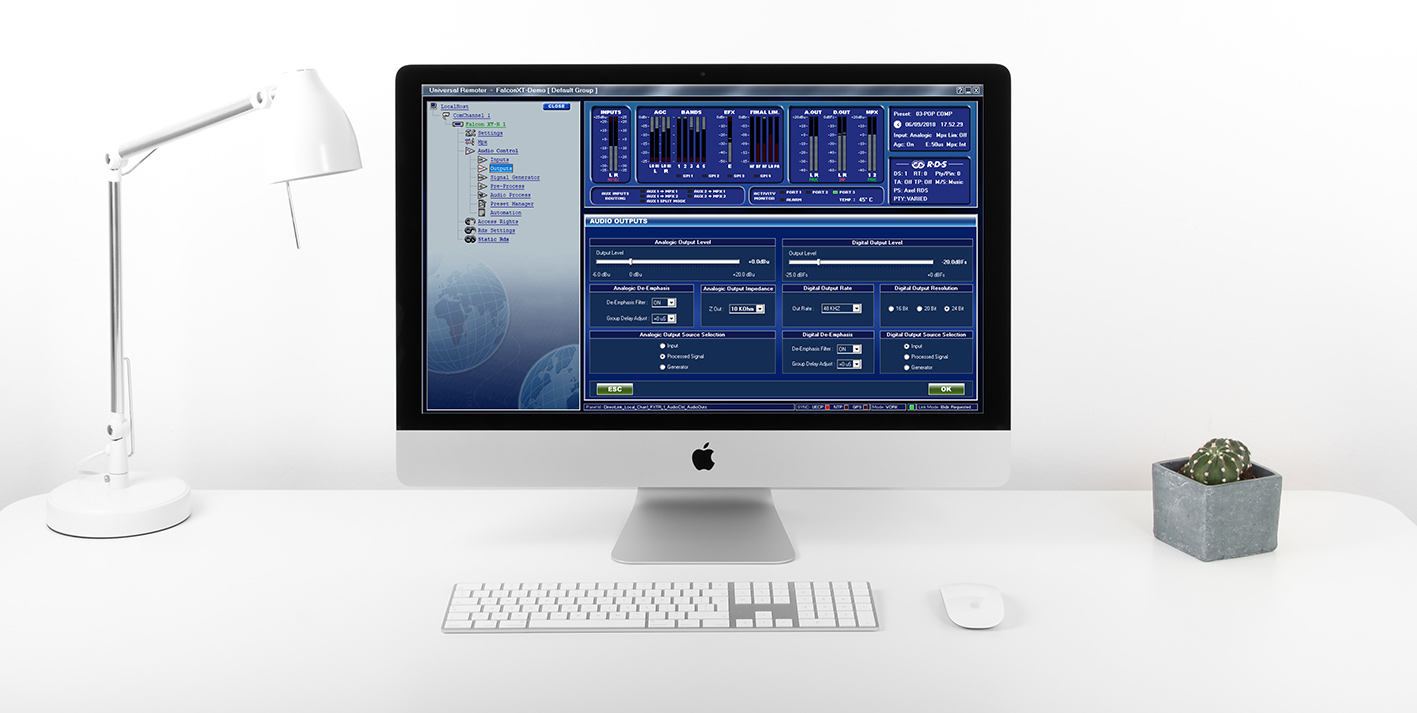
Process & Stereo Generator Section
- 5-Band digital audio processor
- Multiband agc
- Mpx power control - ITU-R BS.412
- Fast DSP Starting time <5 sec (OS < 30 sec)
- Brilliance control
- Expander control
- Overdrive control
- Super bass harmonizer control
- Speech detector
- 3-Band EQ control
- Stereo enhancer function
- Limiter lookahead
- Clipper MPX
- Pilot level and Phase control
- ITU BS412 control
Encoder RDS Section
- Digital RDS encoder
- RDS encoder compliant with UECP EBU SPB490 v7.05, CENELEC (Europa) and NRSC
- (America).
- RDS Level and Phase control
- 2 dataset with 1 Main PS + 10 EON
- Dataset switch managed by UECP/SNMP/ASCII PARSER/GPI.
- Service Groups settings
- UEPC Ports (2 Serials + LAN).
- Access Rights management for each communication port
- RDS Services : PI, AF, PS, RT, CT, M/S, DI, TP, TA, PIN, PTY, SLC0-7, LA, EG, ILS, LSN
- AF: 64 AF lists (max 25 Frequencies)
- RT: 16 strings (max 64 chr)
- RDS Scheduler max 64 events
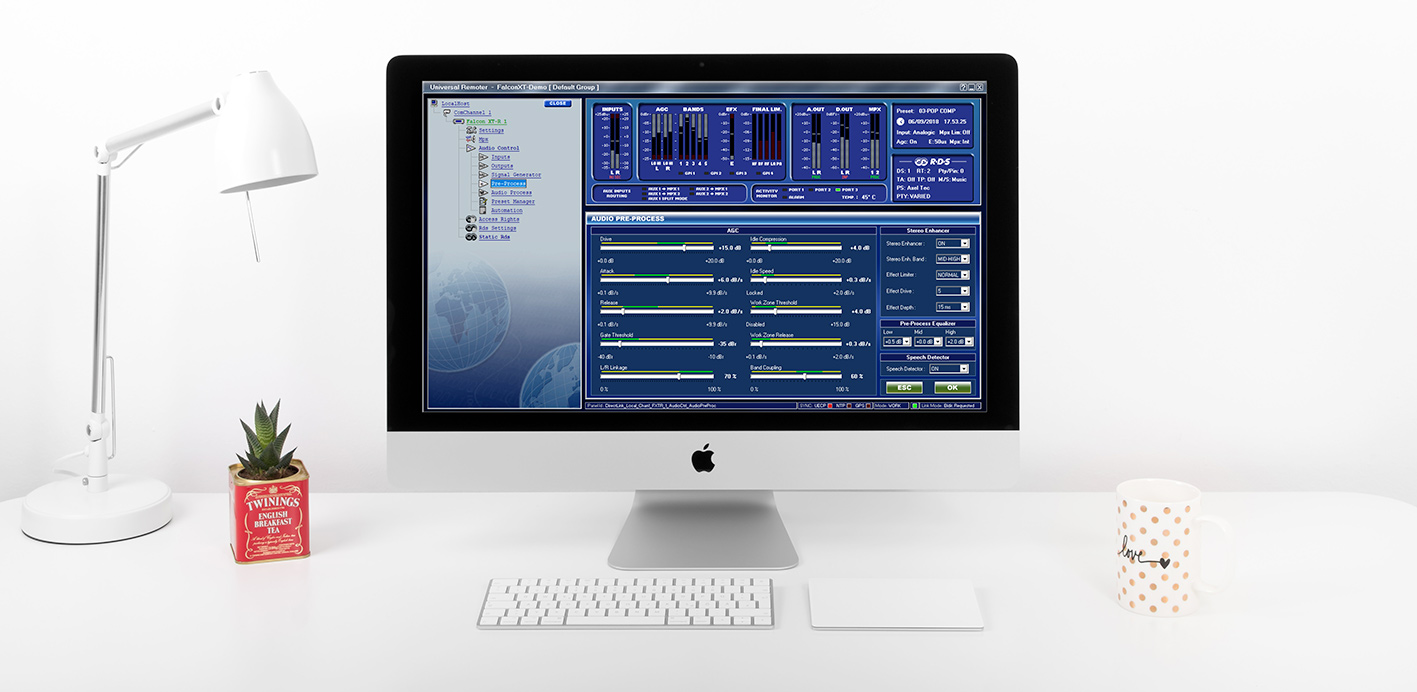
GUI & Monitoring
- Fully programmable by Windows GUI interface.
- Simple and intuitive Web GUI.
- RDS Monitor with Data Set, RT number, PTY, TA, TP, M/S, PS on air
- GUI with led meter bars
- Headphones output with level control
Communications & Management
- Ethernet/USB/RS232/GPIO connections
- UECP - Individual Address Manager
- SNMP V1
- NTP Address for Time and Date synchronization
- SNMP Manager Address
- N°2 RS232 for UECP commands
- 4 GPI and 4 GPO (DB 15p F HD)
- HTTP, SNMP, TCP support
- External GPS support for Time and Date Synchronization (by Sat Time Synchronizer)
- Import and export configuration functions
- PRESET, with load/save/import/export functions
- Easy configuration page setup
- ASCII PARSER interface for easy command line settings
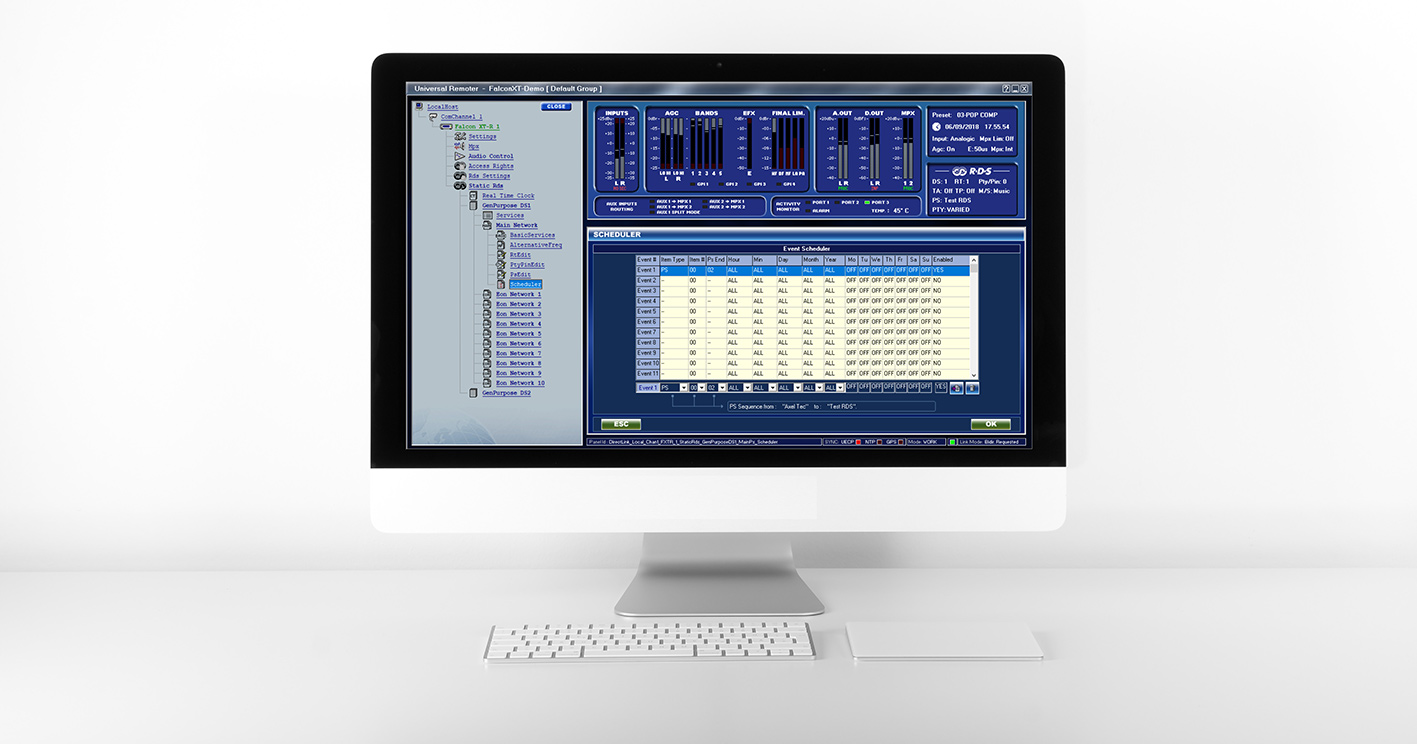
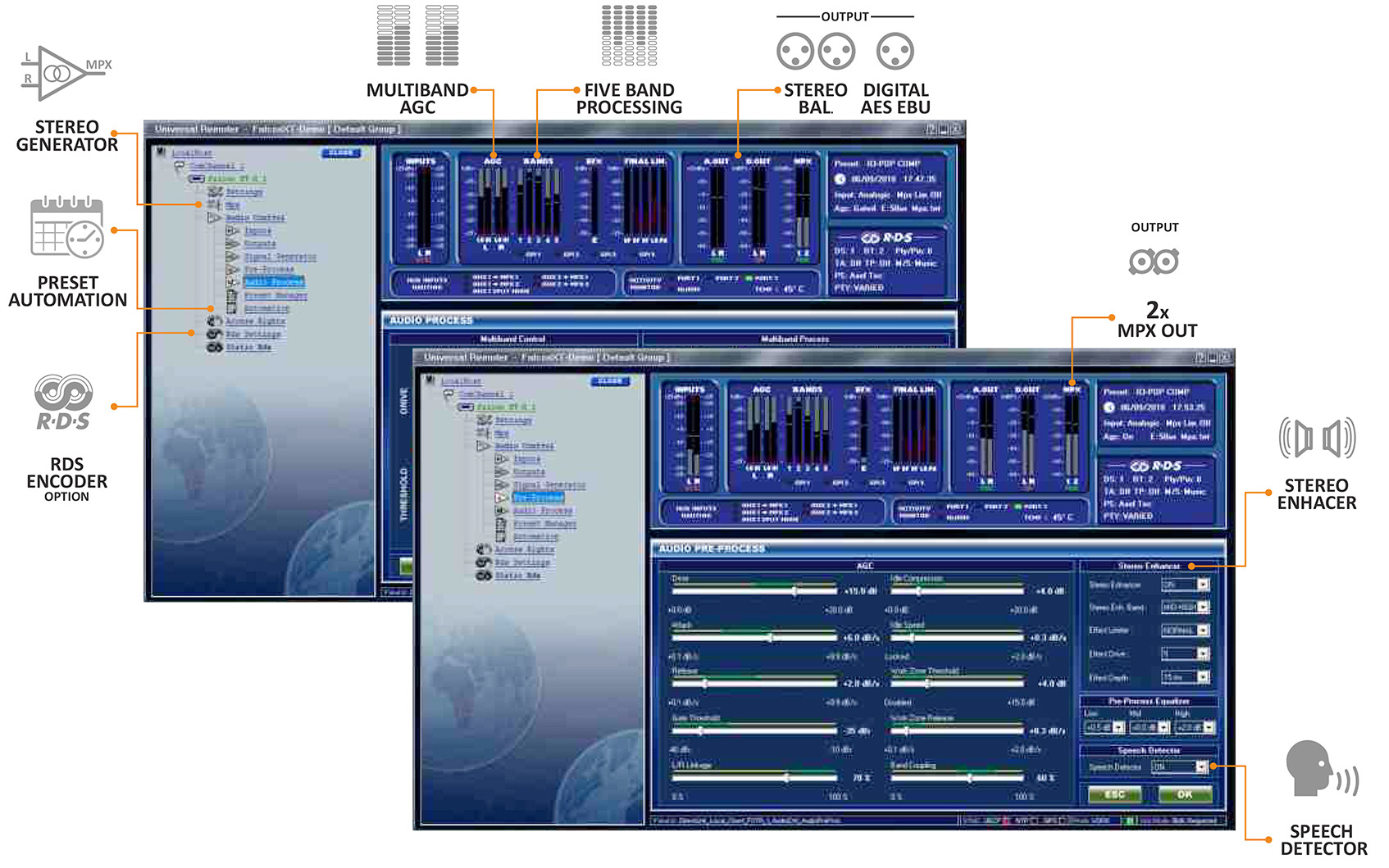
Special Features
Falcon XT is the top class digital audio processor that also features Stereo Generator and RDS Encoder.
It is the full optional and most prestigious equipment designed for those broadcasters that really want to get the best performances.
Falcon XT ensures top quality performances and exclusive audio.
It features powerful DPSs, 5-band architecture, the dual band AGCs, 3-band equalizer, stereo enhancer, speech detector and 4 limiters.
The comprehensive and accurate control of each audio parameter allows to shape perfectly the audio to broadcast unique and exceptional branded sound. The LAN port and the built-in Web Server allow to control the processor and tune the audio from anywhere. The built-in digital Stereo Generator ensures an extremely precise MPX Signal.
The RDS Encoder (optional) is in compliance with UECP SPB490, provides 2 Data Set with a wide range of static services, including Radio Text.
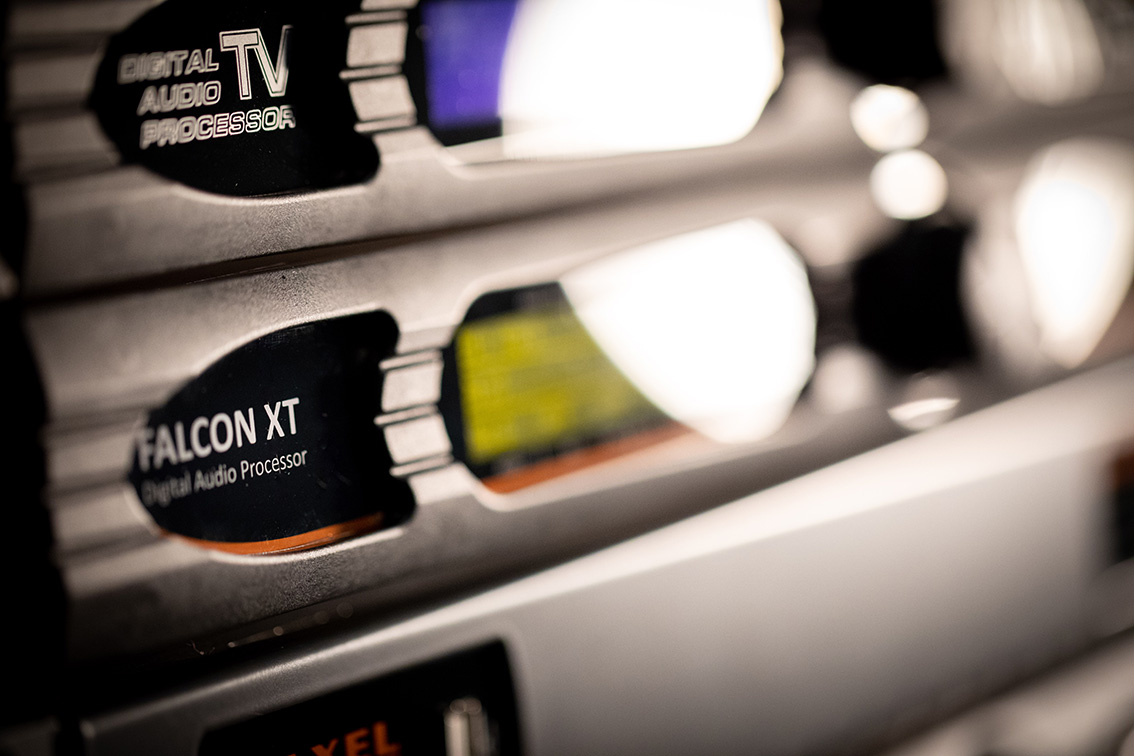
The hardware bypass circuit is always included to ensure audio presence and audio programs continuity. Falcon XT meets the most demanding broadcasters with extremely sophisticated audio features and high standards level: 5-band control compression, dual-band power AGC, three-band EQ and Brightness control.
The Stereo Enhancer parameterized command provides to radio station sound, spacing effect and large stereo horizon opening.
With phases control of mono audio signals, the voice sounds more natural, the Expander control allows to minimize background or unwanted noise, while the Overdrive and the Super Bass improve the sound on low and very low frequencies, creating an impressive effect of loudness.
Furthermore, the SuperBass Harmonizer controls the distortion of bass sound/low frequency, creating a unique sound effect, increasing the energy transmitted by the low frequency. Listening experience becomes beyond compare.
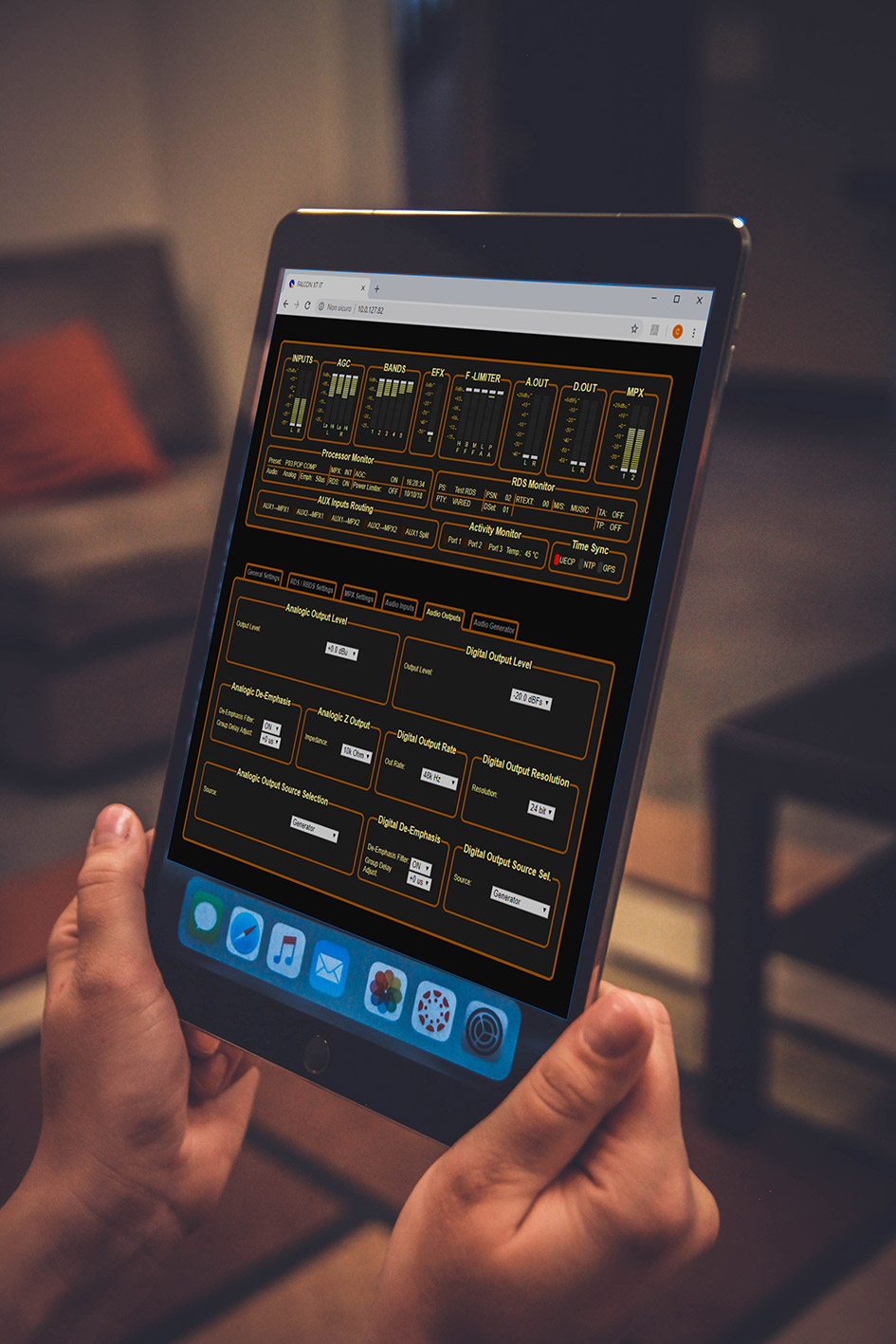
Technical Specifications
GENERAL
Dimensions 434x351x44 mm (1 rack unit)
AC Rate 230 Vac/110 Vac 50 Hz/60 Hz 30 VA
Power factor 0.9
Type of power supply Switching power supply
Processing architecture Fully digital, based on DSP 24 bit/100 Mhz. Signal processing is performed by phase linear filter
Weight ≈ 5 Kg
Operating Temperature -5°C/+50°C
Safety Standard CE, ETL, UL.
Grounding One more earth terminal is provided in Falcon XT body to connect audio earth connection
ANALOG INPUT MODULE
A/D Conversion 24bit Sigma-Delta Conversion (Crystal CS4272)
Connectors XLR, female - Electronically balanced
AD Clipping Point +24.0dBu
Operative Nominal Level From – 12.0dBu to +12.0dBu (0.1dBu Step)
Line Impedance 10 kΩ (Electronically balanced selectable) EMI–suppressed
Distortion less than 0.01% TDH+NOISE (0.0dBu 1 kHz)
AD Dynamic Range 108 dB RMS (110 dB A weighted)
Input Modes Stereo, Mono (Left), Mono (Right), Mono (Left+Right)
DIGITAL INPUT MODULE
Connectors XLR, female – Electronically balanced
Format AES3/EBU
Sample rates 32 kHz/44.1 kHz/48 kHz/64 kHz/88.2 kHz/96 kHz with src and jitter correction
Operative Nominal level From 0.0 dBFs to -24dBFs (0.1 dBu step)
Dynamic Range 125 dB (Typ), 122 dB (Min)
Distortion less than 0.01% TDH+NOISE (0.0dBu 1kHz)
Input Modes Stereo, Mono (Left), Mono (Right), Mono (Left+Right)
ANALOG OUTPUT MODULE
D/A Conversion 24bit Sigma-Delta Conversion (Crystal CS4272)
Connectors XLR, male - Electronically balanced
Output Level -6.0dBu to +20.0dBu (0.1dBu Step) – Max (+20dBu)
Impedance Source 10 Ω
Load Impedance 600 Ω or greater
THD + Noise Less than 0.01% (0.0dBu @ 1 kHz)
Signal to noise Ratio >80 dB unweighted - 100% Mod. 20 Hz – 15 kHz
L/R CrossTalk < –70 dB, 20 Hz–15 kHz
DIGITAL OUTPUT MODULE
Connectors XLR, Male – Electronically balanced
Format AES3/EBU
Sample rates 32 kHz/44.1 kHz/48 kHz/64 kHz/88.2 kHz/96 kHz with src and jitter correction
Resolution 16 bit – 20 bit – 24 bit
Operative Nominal level From 0.0 dBFs to - 25dBFs (0.1 dBu step)
Dynamic Range 125 dB (Typ), 122 dB (Min)
Distortion less than 0.01% TDH+NOISE (0.0dBu 1Khz)
Input Modes Stereo, Mono (Left), Mono (Right), Mono (Left+Right)
REMOTE INTERFACE
Digital Inputs GPIn 4x GP In optocoupled
Digital Outputs GPOut 4x GP Out Open Collector optoisolated
Serial Interface 2x RS-232 Serial protocol ports EMI filtered
USB 1x Universal Serial Bus port – B type EMI filtered
Ethernet Port and Parser ASCII protocol Ethernet (option), over RJ45 connector with web server interface.
MPX/COMPOSITE OUTPUT
Mod Power Limiter adjustable from -1.0dB to +12dB according to ITU-R BS.412
Pilot Frequency 19 kHz +/- 1Hz
Pilot Level -25.5 to -14.0dB in 0.1dB/Step - Ref 100% Mod
Pilot Stability 19 kHz, ± 1 Hz.
Pilot Phase Adjustable +/- 12 deg. 1 deg step
Pilot THD+Noise 0.03% (TDH 0.002%)
Stability +/-10 ppm (-10 to +55 °C)
Signal-to-Noise Ratio (S/N) > 85dB on a 60 kHz Bandwitdh, referenced to 100% modulation, unweighted
Distortion <= 0.01% THD - Bypass mode, de-emphasized, 20 Hz – 15 kHz bandwidth, referenced to 100% modulation, unweighted
Stereo Separation Greater than 70 dB, 30 Hz – 15 kHz
Linear Crosstalk >-80 dB - main channel to sub-channel or sub-channel to main channel referenced to 100% modulation
38 kHz Suppression >= 70 dB (referenced to 100% modulation)
Pilot Protection > 65 dB relative to 10% pilot injection, ± 500 Hz
Crosstalk M/S 70 dB
Crosstalk S/M 70 dB
MPX clipping & limiting Based on look-ahead techniques
RDS/RBDS Protection better than - 55 dB @ 56kHz, better than - 65dB@57 kHz (MPX Clipper Disabled)
Pre-emphasis 50usec, 75usec/+- 3usec adjust control
MPX Outputs 2, with independent level controls
Connector Type BNC, floating, EMI suppressed
Levels - 6.0 dBu to + 12.0dBu, 0.1 dB/step
Load Impedance 600 Ohm or greater
Source impedance 10 Ohm
Maximum Load Capacitance 5nF
MPX Modes Stereo, Mono, L+R, L.-R, Pilot only, No Pilot
MPX Clipper On/Off and adj 95% to 105 %, 1% step
SINE WAVE GENERATOR
Purpose Test
Freq 30 Hz - 100 Hz - 400 Hz - 1 kHz - 5 kHz - 10 kHz - 15 kHz
Level from 0% to 120% of modulation
Modes Left=Right, Left=-Right, Left or Right Only
Dimensions
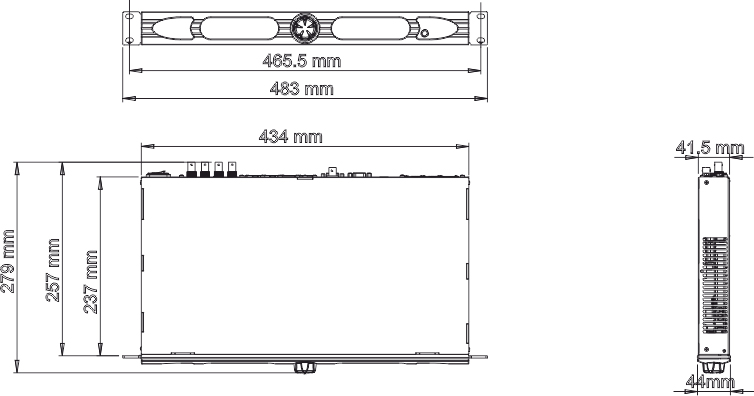
DML Audio
Radio
Digital Media Logger
All the audio you can bring
Media logging, or Compliance Recording, is the process of capturing audio, usually in low quality format, and preserving the recordings for a large number of days, usually 2 or 3 months. In most countries Compliance Recording is obligatory by law for all radio broadcasters, but it can also be used for advertisement certification, audio quality surveillance, competition monitoring and media rebroadcasting.
DML AudioMain Specs
Archive any logging period 30, 60, 90, 180, 365 days
Single channel and multiple channels configuration
Compatible with WDM audio cards and AoIP drivers (Dante Livewire, ect)
Compatible with FM and AM tuner cards
Ip input in UDP, RTP, RTSP, RTMP, HTTP, Shoutcast, Icecast
Capture sampling 32,44.1 and 48 khz mono or stereo
Continuous 24/7 recording without any sample loss between file segments
Formats MP1, MP2, MP3, WAV, WMA, AVI (DivX), ASF (Windows media), MPEG1, MPEG2, MP4 (H264 and AAC), FLV with logo on video
Customizable audio bitrates and advanced parameters
Customizable segmentation per file duration (typically 60 min), file size or at midnight
Automatic delete of oldest files when disk space is low
Ip streaming in WMA
Volume adjustment with compressor and AGC
Alarm notification via E-mail and SMS for black video, freeze, no audio, archive length, etc.
Accurate statistics on capture process and datarates
Accurate GPS (receiver optional) Date and Time synchronization
Data security featuring RAID architecture or software mirror, content is preserved in case of disk failure.
Remote system monitoring from any LAN or Internet connected Pc
Easy content export/conversion with Mark-In and Out points. Flexible transcoding to most of video formats.
Main Specs


DML Audio Recorder:
non stop Audio logging
DML records audio contents coming from the widest variety of sources (unbalanced, balanced, digital AES/EBU, Dante, Livewire, Antenna, SAT, DVBT, DVBC, ATSC, IP, etc) and stores them on Hard Disk (recordings stay on line depending on hard disks capacity, usually: 30/60/90 days as required by laws in many countries).
System status is constantly monitored either locally, thanks to DML-embedded tools, as well as from any networked computer running the DML Monitor free software.
Whenever rising, alarms may be notified via email or SMS.
DML Recorder supports a large variety of video formats, compressions and resolutions, from MP1-2-3 to WAV, but also many video formats allowing to superimpose a logo on video and take advantage of the overlay datestamp captured onto the video stream, for accurate and tamper proof date time certification.
DML files are standard multimedia files, which can also be played on any ordinary multimedia player. Accurate date and time certification is guaranteed through synchronization to GPS satellites time reference with AxelTech’s Sat Time Synchronizer receiver.
DML Recorder status is constantly monitored by auto-diagnostic tools. In case of alarms, the operator is warned via email or SMS.
Monitored parameters: Disk activity / video presence / video freeze / audio presence / instant data-rate / average data-rate / audio stream integrity.
With the free DML Player software, content can be easily edited and downloaded on external media and converted to the most popular audio formats.
DML Player:
content searching,
browsing and conversion
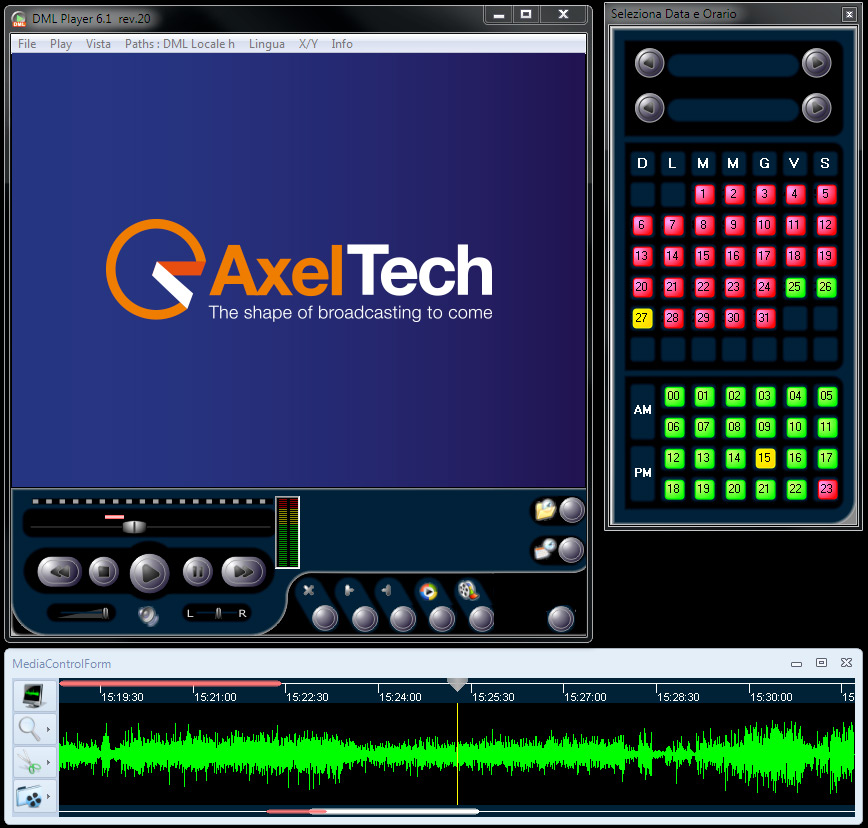
DML Player is a free software application for real time content browsing from any networked Pc. Exclusive simultaneous multi-channel playback allows accurate audio temporal comparison. The calendar window shows the available recordings. Just ‘click’ on desired date and time to start playout. Play speed is variable from 0.5x to 16x. Go To date / time function allows direct playback to specific recorded events. Capability to jump to specific date and time using generic automation Log files.
Fast export or conversion in native or popular formats to fit all distribution and storage needs.
Mark point positioning is frame-accurate using handy scroll & drag bars, along with keyboard shortcuts.
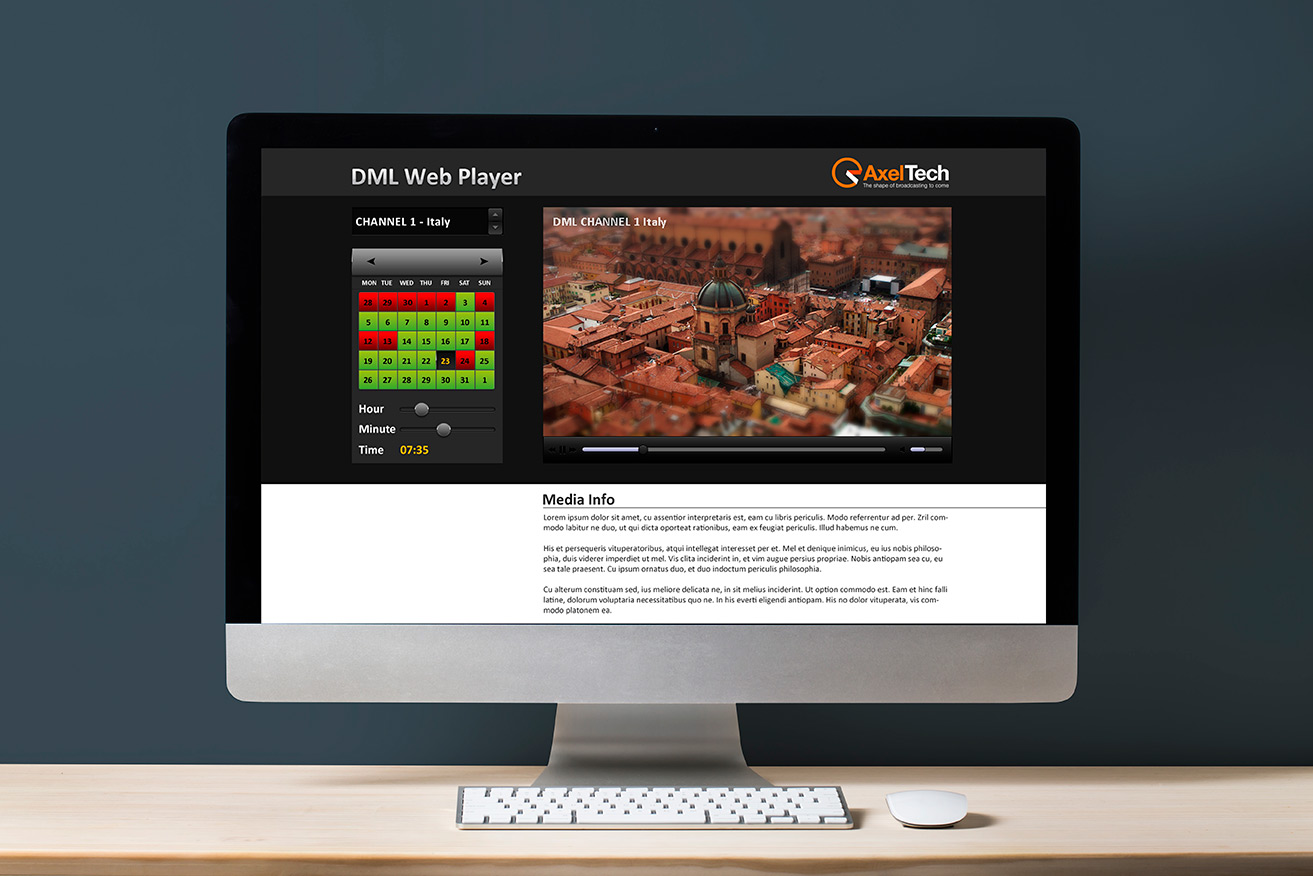
DML Monitor:
remote monitoring via web
DML Monitor is a free software tool which allows monitoring in real time through LAN and Internet of one or more DML units. System and recording supervision will be available from anywhere. DML Monitor displays current video frame for each recorder, together with status info, systems logs, streaming audio and the upcoming of alarms or parameters out of range.
DML Web Viewer:
content searching and browsing via web
DML Web Viewer is a free server application for real time viewing from any Internet browser and works on windows, linux, mac or any handheld device. The calendar widget shows the available recordings. Just ‘click’ on desired date and time to start listening. Configuring main router ports allows viewing from internet from any remote location.
Lot of options
DML Copy
DML Copy is an optional software which copies files from multiple DML recorder units to centralized storage systems. In multiple channel systems it is advised to deplay a central storage unit with RAID 5 or 6 redundancy rather then on the single capture units. DML Copy will provide a “slow” and controlled copy service to avoid saturating LAN bandwidth.
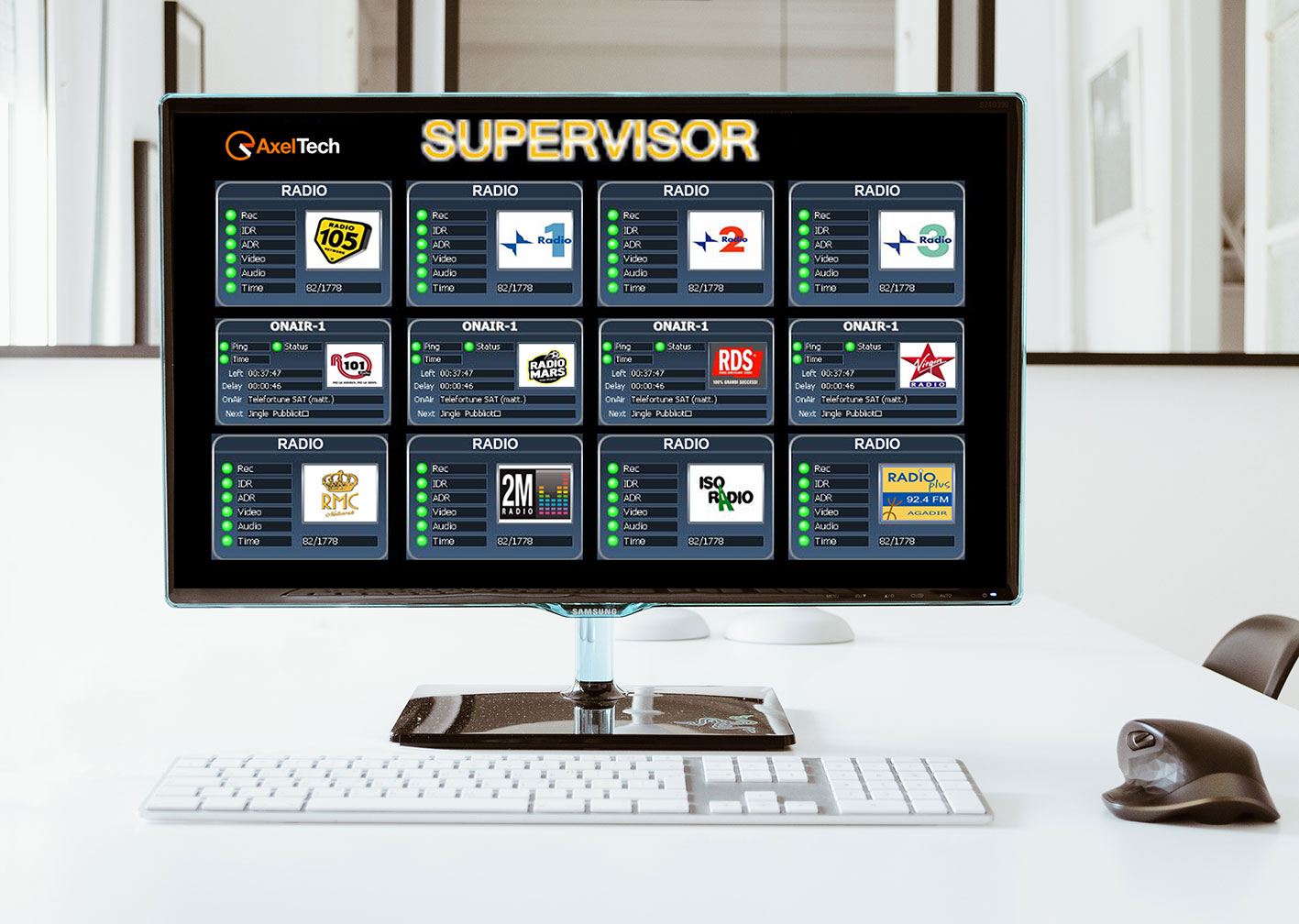
DML Supervisor
Supervisor is an optional software which monitors multiple unit status and connected devices, managing hierarchical alarm levels and notification via email, SMS, fax, etc. Suggested for multichannel environments.
XMAM
XMAM is an optional archiving and catalogue system which provides fast and simple integration with DML allowing perpetual archiving of selected media. XMAM is a Web-based, user focused interface that supports access and processing of digital assets like video, audio, images, documents and presentations. XMAM supports standard web browser navigation without additional client software needed.
Sat Time Synchronizer
STS is the optional antenna receiver and software which allows an extremely accurate synchronization of Pc clock to GPS satellite reference. Recomended for tamper-proof date / time certification.
Complete Multiple channel full Turnkey solutions
AxelTech can provide multiple channels turnkey systems with DML capture units, file servers with redundant storage, LAN infrastructure, KVM switches, completely precabled and configured in AxelTech’s laboratories. Monitoring and editing desks are customized according to customer needs allowing coroporate and government organizations to take advantage of a fail proof solution. Local installation, training, baby sitting and after sales support is provided directly by AxelTech.
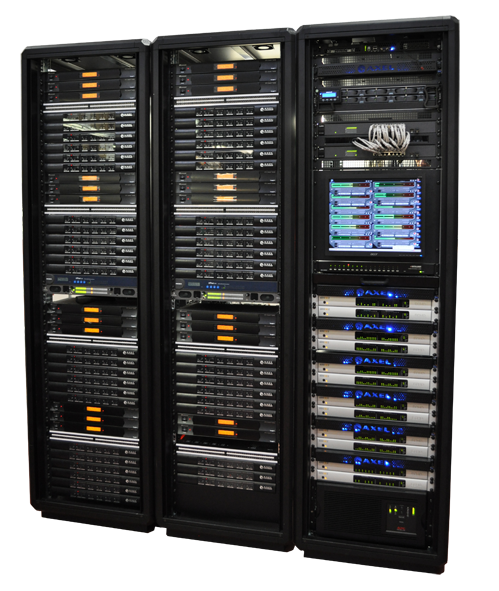
Minimum system requirements
System requirements may vary on number of captured channels and audio quality.
Intel i-3
8 GB RAM
Win 10
Separate disk partition for each channel
128 GB per 1 channel 90 days 128 kb/s
Main Specs
Ask for aquote now
Subscribe to our newsletter
Oxygen 3000
The number 1 of the category, upgraded with extended features
Oxygen 3000 Digital Mixing Console for Radio defined a new standard in the broadcast market. Characterized by an elegant design and compact size, Oxygen 3000 is suitable to be used as On Air Console and Production Console. Oxygen 3000 is based on digital technology with DSP audio processing to deliver high-end quality, latest features and flexibility with ease of use. Oxygen 3000 is the Bestseller in its category at the best quality/price ratio. Oxygen 3000 is a powerful and compact unit featuring 10 faders, meters for each single channel, built-in 7” display for settings, wide range of connectivity and accessories in a rugged and classy steel chassis.
Easy and reliable as the analogue mixing consoles, Oxygen 3000 adds the value of the digital engine that grants a near 0 latency ( < 0,7 ms I/O ) and plenty of advanced functions as the internal routing signal, customizable preset and easy recall, user defined smart keys, analog and digital I/O.
Oxygen 3000 completely revised with a brand new firmware.
Oxygen 3000 New Features
General
- Automatic firmware update via Internet
- Conditional Access (4-digit PIN)
- Save and recall EQ presets (up to 10)
- New real-time EQ algorithm with graphic
- Faster and more accurate Led Meters display
- Save and recall control panel configuration with 10 Snapshots
- Save and recall total console configuration. The configuration can be saved to internal memory (microSD), USB and PC (via WEB interface)
- User custom GPIs (e.g. Ring, Talkback, channel ON/OFF, etc.)
- User custom GPOs (e.g. Hook/ONAIR, Studio-Light, Control Room-Light)
- Selectable home page layouts for built-in 7" display
- Selectable home page layouts for HDMI Output
- Gain adjustment knobs with adaptive speed
- Dimmable buttons light
- Adjustable fader ON/OFF threshold (from -50db to 0 db)
- CountUp/Timer/CountDown on studio and control room microphones on the built-in 7" display
- A & B source names on the 7" Display and HDMI Out
- Ducking / AutoFader assignable to all sources (automatic attenuation of music on speech)
- WEB UI with service features (Save, restore, update, logs, etc)
- New theme icons on display screens
Stereo Inputs
- Channel mode selection: STEREO, MONO, L, R, INV-L, INV-R, INV
Bluetooth Module
- With Bluetooth calls, PFL enables PRIVATE conversation mode
MIC-Mono Inputs
- Independent ON AIR Lights and Cut Off control, when opening Control Room and Studio microphones
- PFL button switches to private conversation on Hybrid/Telco/Bluetooth mode
- Enable TalkBack feature on any Studio or Control Room microphone
- Parametric Compressors/Expander (drive, threshold, attack time, release time) for MICROPHONE and MONO inputs
- Save and recall microphone presets including Compressor/Expander settings
- Phase inversion on microphone inputs
Telco Channels
- GPI and GPO management on all 5 Telco channels
- RING and HOOK on F1 key for each TELCO channels
- N-1 on Telco outputs for all BUS (PGM, SUB, AUX-1, and AUX-2)
Monitor Out
- Adjustable maximum Control Room and Studio speakers volume
- Adjustable maximum Control Room and Studio headphones volume
- Adjustable CUT or Attenuation mode (-40, -30, -20, -10 dB) on Control Room and Studio speakers
- Independent source selection (PGM, SUB, AUX1, AUX2, EXT) for control room and studio speakers, control room and studio headphones with or without PFL
- Independent Talk Back management on Control Room and Studio speakers
- Independent Talk Back management on Control Room, Studio and Guest headphones
- Selectable source for Guest headphones (PGM, SUB, AUX1, AUX2, EXT)
- Same source selection for Control Room and Studio headphones, with independent level
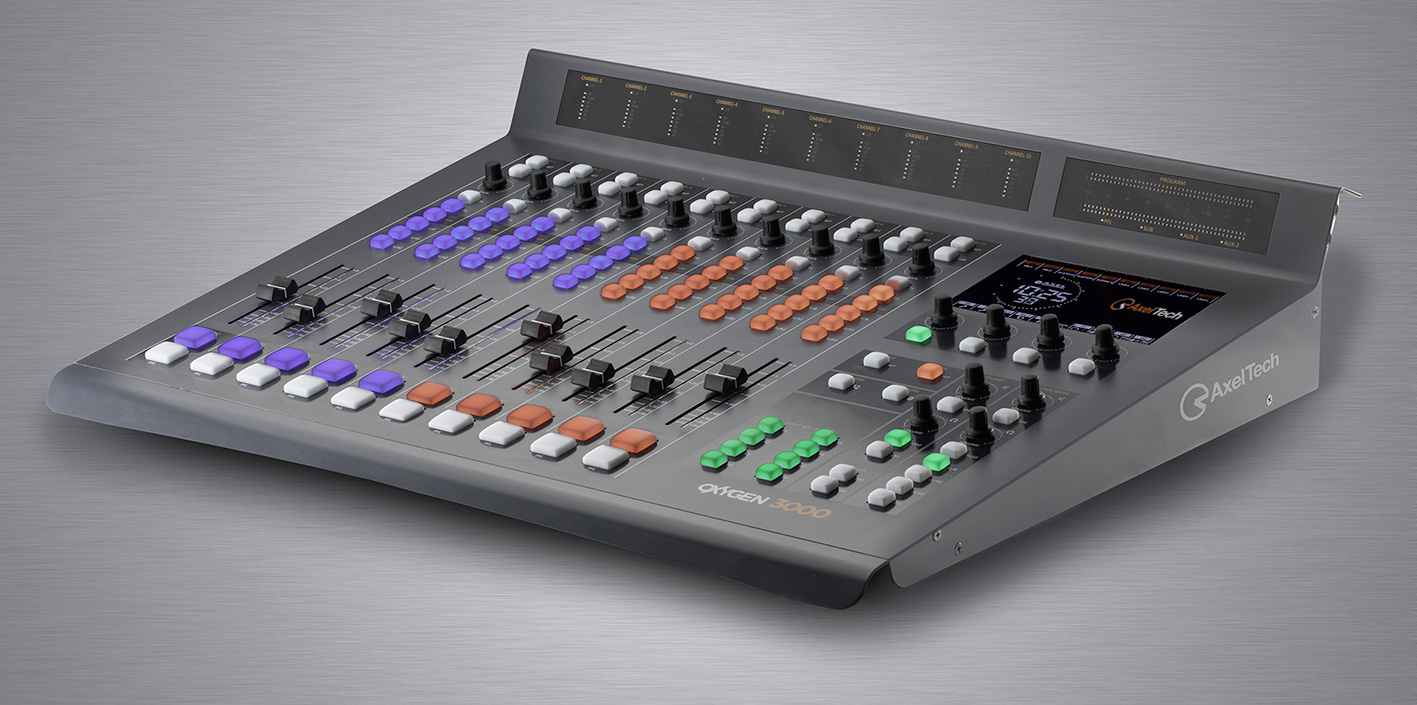
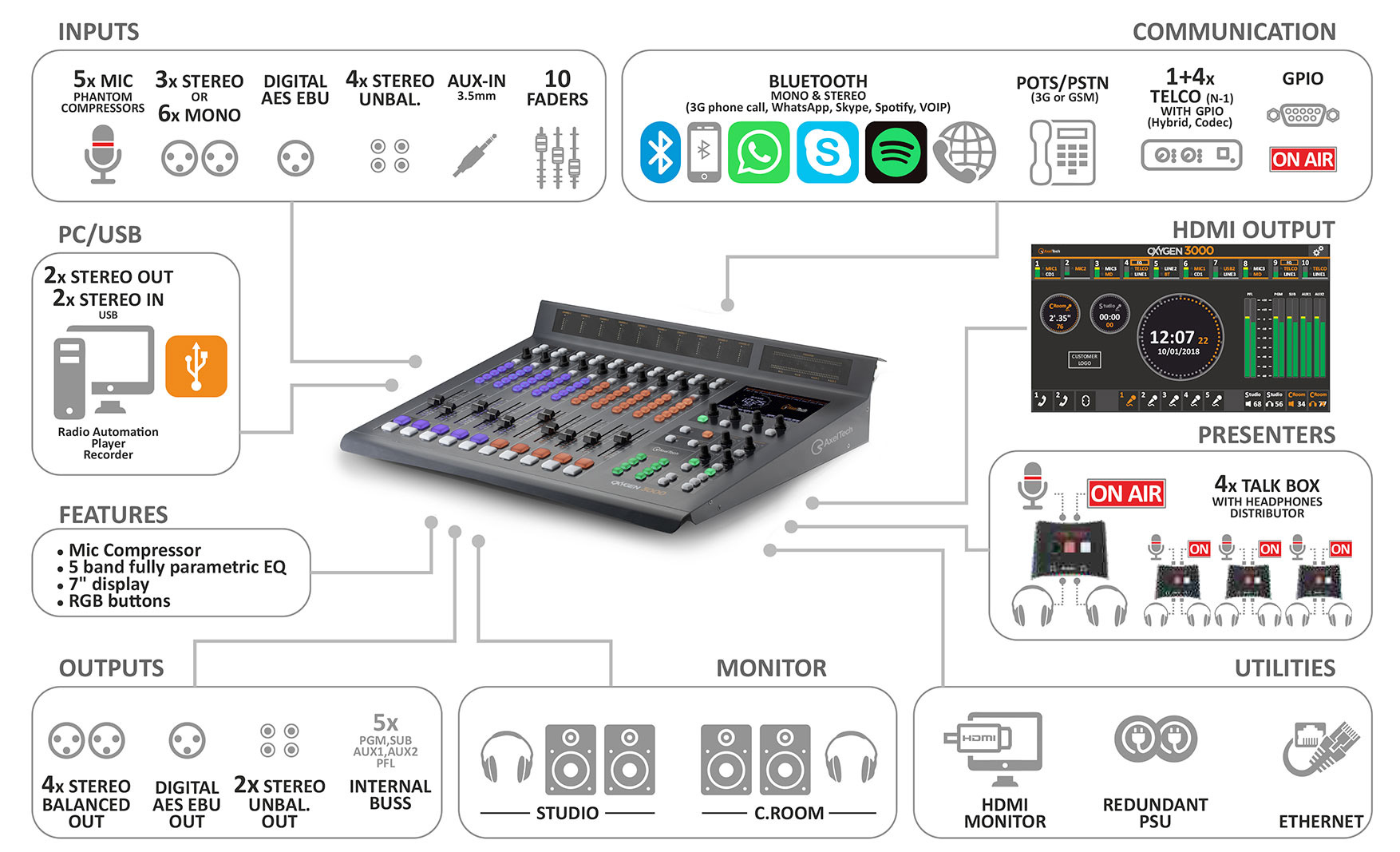
Highlights
General
- Fully Digital Broadcast Console
- Near 0 latency ( < 0,7 ms I/O)
- Digital Signals routing
- 10-fader console
- 4+1 busses (PGM, SUB, Aux1, Aux2, PFL)
- User-definable Snapshot
- 5 band fully parametric EQ
- Dyn Processor on microphone inputs
- Webpage
- Customizable RGB colored buttons
- 7” Graphic Color Display
- Ctrl-Room and Studio Facilities
- A/B Fast source switch buttons
- 10 led meter bars for input source monitoring
- High Resolution led meter bars for outputs (164 leds)
- HDMI Out - Full HD connection for mixer monitor
- 2 Timers (Ctrl-Room and Studio microphones timers on HDMI Monitor)
- TalkBox for guest and presenter*
- Redundant PSU (optional)
Input Output
- 5 microphones inputs
- 8 stereo inputs
- 7 stereo outputs
- 1 built-in telephone hybrid,
- 1+4 telco interface with GPIO
- Bluetooth audio interface
- 1 digital In/Out (AES EBU)
- 2 USB audio interface
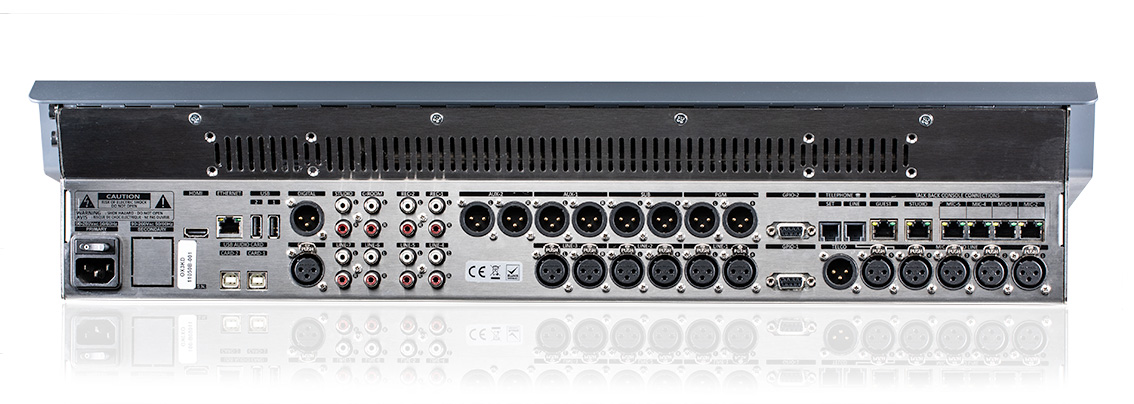
Inputs & Outputs
Microphone Inputs - Oxygen 3000 allows connection of XLR and RJ45 connector:
- Inputs replicated from XLR to RJ45: 2-3-4-5, balanced with + 48V Phantom and GPIO
- Telco: Microphone No. 5 mutually exclusive
Digital input line:
- Digital Input: 1 AESEBU Input on XLR
Analogue Outputs:
- Line Outputs: 6
- Balanced outputs: 4 Line out on XLR - PGM, SUB, AUX-1, AUX-2
- Unbalanced outputs: 2 Line out on RCA - REC-1, REC-2
Headphones and local monitor outputs:
- Balanced outputs: 2 line out on RJ45 for Studio Presenter and Studio Guest Headphones
- Unbalanced outputs: 2 Line out on RCA for Control Room and Studio Speaker
- Unbalanced outputs: 2 Line out on Jack 6.3 for Control Room and Studio Headphones
Analogue inputs lines:
- Line Inputs: 8
- Balanced inputs: 3 Line In on XLR
- Unbalanced Inputs: 4 Line on RCA
- Aux Input: 1 Line In Jack 3.5mm
Telephone hybrid and Telco:
- Telephone Hybrid: 1 POTS/PSTN telephone line with Line.In and Tel.Set connection
- Telco: 1 in/out N-1 to connect external telephone hybrid with control via TLC/GPIO
- 4 inputs/outputs N-1 on inputs STEREO 4/5 and outputs REC 1/2
Digital output:
- Digital Output: 1 AESEBU output on XLR
GPI/GPO:
- GPI: 12 in total, for Talk back, Telephone Hybrid or other features
- GPO: 10 total, to control OnAir lamps or Telephone Hybrid
Talk Box
It is a device dedicated to the presenter or guests.
This TalkBox is very simple to connect to the On Air Console, actually its take 2 RJ45 cables of the length that needed to connect it to the mixer. It is possible to connect maximum up to 4 units.
The TalkBox offer a direct connection of the microphone and relative On-Air light, it is also possible to directly connect the studio's On-Air Light. The Talk Box has a headphone amplifier with two 6.3mm outputs.
Through the two large backlit buttons it is possible to activate and deactivate your own microphone (On / Off / Cough) or enable Talk back to the console.
Details
USB audio interface
The USB audio interface allows to directly connect the PC to the Oxygen 3000 console, with no need for audio cards: infact the PC detects the console as a digital audio card with 2 stereo inputs and 2 stereo outputs for simultaneous playout and recording.
Telephone Hybrid and Telco
The built-in telephone hybrid allows direct connection of a telephone line POTS/PSTN on RJ-11C. It’s also available a Telco N-1 in/out, to connect Oxygen 3000 to an external telephone hybrid. The output Telco N-1 is always available on XLR male, while the input receiving line is mutually shared with Mic-5. TLC commands are available on SubD connector with Hook and Ring interface for external telephone hybrid.
4 inputs/outputs N-1 on inputs STEREO 4/5 and outputs REC 1/2 are also available without GPIO controls.
Bluetooth
Oxygen 3000 has a Bluetooth connection. This allows airing the calls made via Skype, Viber, Whatsapp or a normal phone calls by a Smartphone and Tablet.
Oxygen 3000 has two modes of Bluetooth connection, bidirectional to support phone calls and mono monodirectional for streaming high quality stereo audio (A2DP): this last feature allows airing the music from smartphones and tablets.
GPIO
The console Oxygen 3000 has 12 GPI and 10 GPO, which allow connections to OnAir signal lamps according the opening of a microphone channel, or provide HOOK and RING commands for external telephone Hybrid.
Features details
Display 7"
The OXYGEN 3000 has a 7 " colour graphic display for displaying all the airing parameters and for configuring all the device feature.
The large display combined with the 4 rotary knobs allow the fast and intuitive programming of all the mixer parameters. actually, Oxygen 3000 have a very easy and intuitive programming interface has been specially designed.
HDMI output
The HDMI output in OXYGEN 3000 is offer the possibility to connect a display monitor FullHD at the console. This feature providing multiple information on settings and operating levels. List of HDMI output display components.
- Audio input source leavle
- 4+1 BUS output leavle
- A/B sources assigned of 10 channels
- Display ON-Air sources
- Microphone On timer (control room & studio)
- Large Clock
- Audio output level (Loudspeakers & Headphones)
- OnAir microphone
- Telephone active
The HDMI interface also offers the possibility for radio stations to upload their own logo on the graphic interface.
Power supply
Universal Power on IEC Schuko cord, thanks to the universal power supply switching with working voltage between 90Vac and 264Vac and frequency between 50-60Hz. The PSU is able to adapt itself to the operating voltage of any country in the world. It’s also available redundant power supply (optional)
Technical Specifications
Analog Balanced Stereo Inputs
Connector XLR Balanced – EMI Suppressed
Input Impedance 10Kohm
Nominal Input Level (sensitivity) 0dBu
Max Input Level (clipping point) +18,5dBu
A/D conversion 24 bit / 48 Khz
Frequency response +/-0,5dB from 20Hz to 20kHz
Signal To Noise Ratio (referred to peak level) >100dB
Stereo Separation (referred to peak level) >90dB
THD+N <0,002%
Analog Unbalanced Stereo Inputs
Connector RCA unbalanced – EMI Suppressed
Input Impedance 10Kohm
Nominal Input Level (sensitivity) 0dBu
Max Input Level (clipping point) +18,5dBu
A/D conversion 24 bit / 48 Khz
Signal To Noise Ratio (referred to peak level) >90dB
Stereo Separation (referred to peak level) >80dB
THD+N <0,05%
Analog Balanced Microphone Inputs
Connector XLR Balanced – EMI Suppressed
Input Impedance 2,4Kohm
Nominal Input Level (sensitivity) -21dBu
Max Input Level (clipping point) +7dBu
A/D conversion 24 bit / 48 Khz
Signal To Noise Ratio (referred to peak level) >90dB
THD+N <0,01%
Analog Gain Adjustable +0 ÷ +60dB (3dB step)
Phantom Power +48V
Analog Balanced Telco Input (shared with MIC5, mutually exclusive)
Connector XLR Balanced – EMI Suppressed
Input Impedance 2,4Kohm
Nominal Input Level (sensitivity) 0dBu
Max Input Level (clipping point) +18,5dBu
A/D conversion 24 bit / 48 Khz
Signal To Noise Ratio (referred to peak level) >90dB
THD+N <0,01%
Analog Balanced Stereo Outputs
Connector XLR Balanced – EMI Suppressed
Output Impedance 23ohm, nominal 600ohm
Nominal Output Level 0dBu
Max Output Level (clipping point) +18,5dBu
D/A conversion 24 bit / 48 Khz
Signal To Noise Ratio (referred to peak level) >100dB
Stereo Separation (referred to peak level) >90dB
THD+N <0,002%
Analog Unbalanced Stereo Outputs
Connector RCA Unbalanced – EMI Suppressed
Output Impedance nominal 560ohm
Nominal Output Level 0dBu
Max Output Level (clipping point) +19dBu
D/A conversion 24 bit / 48 Khz
Signal To Noise Ratio (referred to peak level) >90dB
Stereo Separation (referred to peak level) >80dB
THD+N <0,05%
Analog Balanced Talkbox Outputs
Connector RJ45 balanced – EMI Suppressed
Output Impedance 100ohm, nominal 600ohm
Nominal Output Level 0dBu
Max Output Level (clipping point) +14dBu
D/A conversion 24 bit / 48 Khz
Signal To Noise Ratio (referred to peak level) >100dB
Stereo Separation (referred to peak level) >90dB
THD+N <0,05%
Analog Balanced Telco Output
Connector XLR Balanced – EMI Suppressed
Output Impedance 23ohm, nominal 600ohm
Nominal Output Level 0dBu
Max Output Level (clipping point) +18,5dBu
D/A conversion 24 bit / 48 Khz
Signal To Noise Ratio (referred to peak level) >100dB
THD+N <0,002%
Digital Input
Connector Balanced on 1 XLR – EMI Suppressed
Input Impedance 110Ω
Standard AES3
Audio Sample Rate 32/44.1/48KHz with aSRC
Resolution 24 bit
Dynamic Range (Converter Values) 124dB
Digital Output
Connector Balanced on 1 XLR – EMI Suppressed
Input Impedance 110Ω
Standard AES3
Audio Sample Rate 48KHz
Resolution 24 bit
Dynamic Range (Converter Values) 124dB
USB Audio Digital I/O
Connector USB Type B – EMI Suppressed
Playback And Recording Sample Rate 48KHz fixed
Resolution 16 bit
Available Stereo Channels 1 Play & 1 Rec for each USB interface
PSTN Interface
Connector RJ11
Transhybrid loss >36dB
System
Audio Core Analog Devices ADAU1452 32bit 294MHz fixed point DSP
Audio CODECs Cirrus CS42448 24bit/192kHz
System Core Allwinner A20 dual core cortex-A7 at 800MHz, 1GB RAM
System display 7” TFT 800x480 LCD
LAN Connection RJ45 - 100Mbit
Nominal Delay (analog input to analog output) 0,7ms
GPIO Inputs/Outputs 12 GPI / 10 GPO
Communication Port 2xUSB type-A, 2xUSB type-B , 1xLAN, 1xHDMI
Operating Temperature 0°C ÷ 40°C
PSU (optionally redundant)
Power Supply 90-260 Vac / 47-63 Hz 45W
Dimensions
Dimensions (W; H; D) 660mm; 142mm; 540mm
Weight < 20Kg
Dimensions


